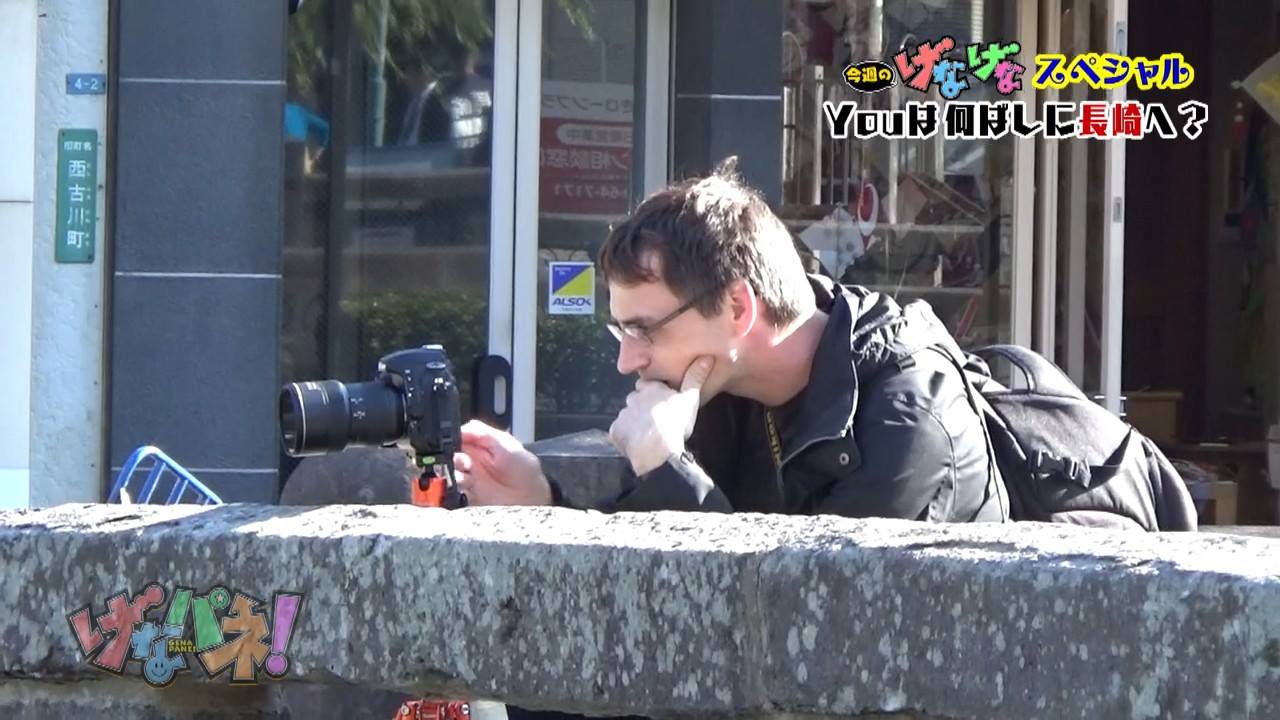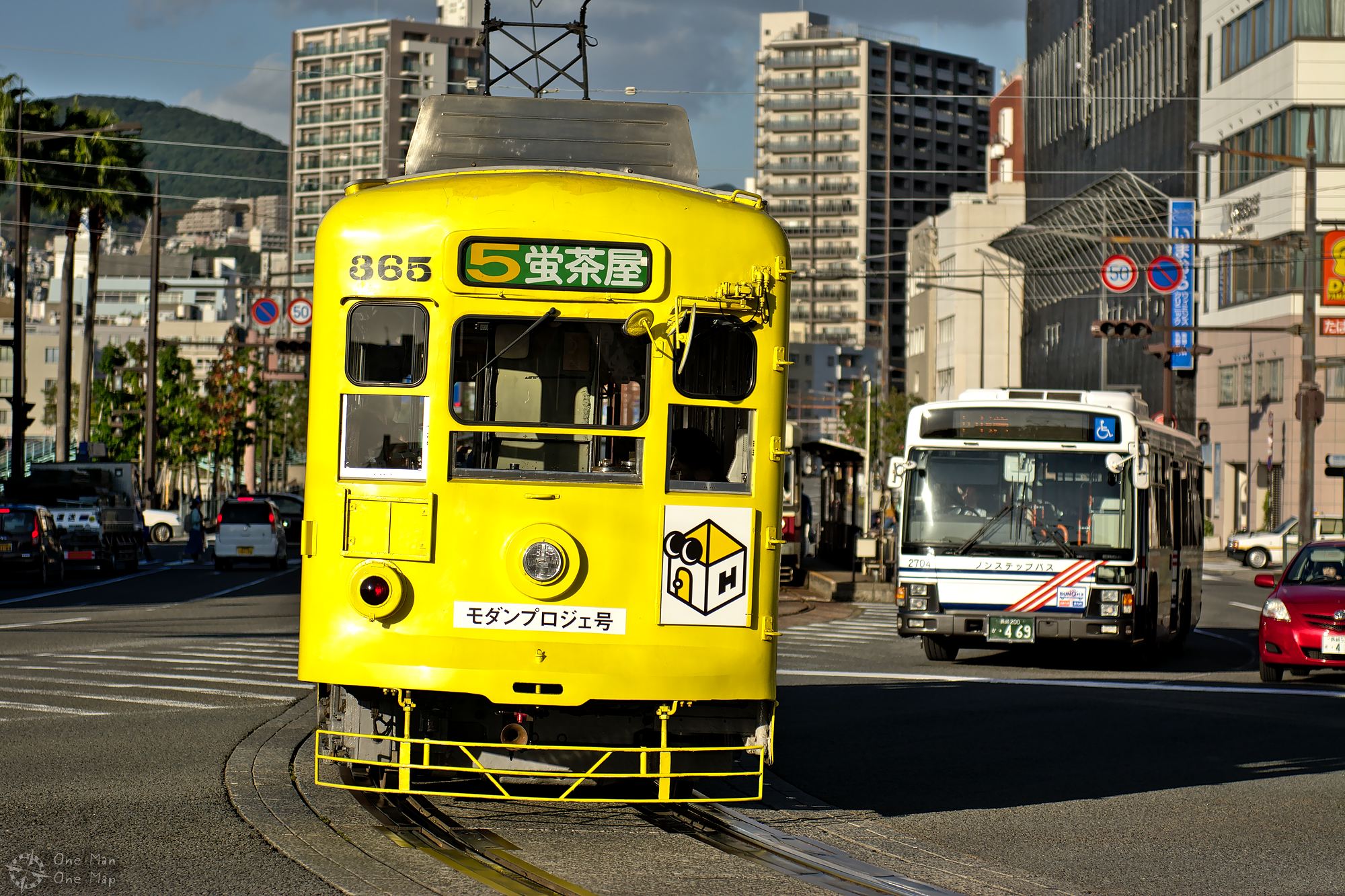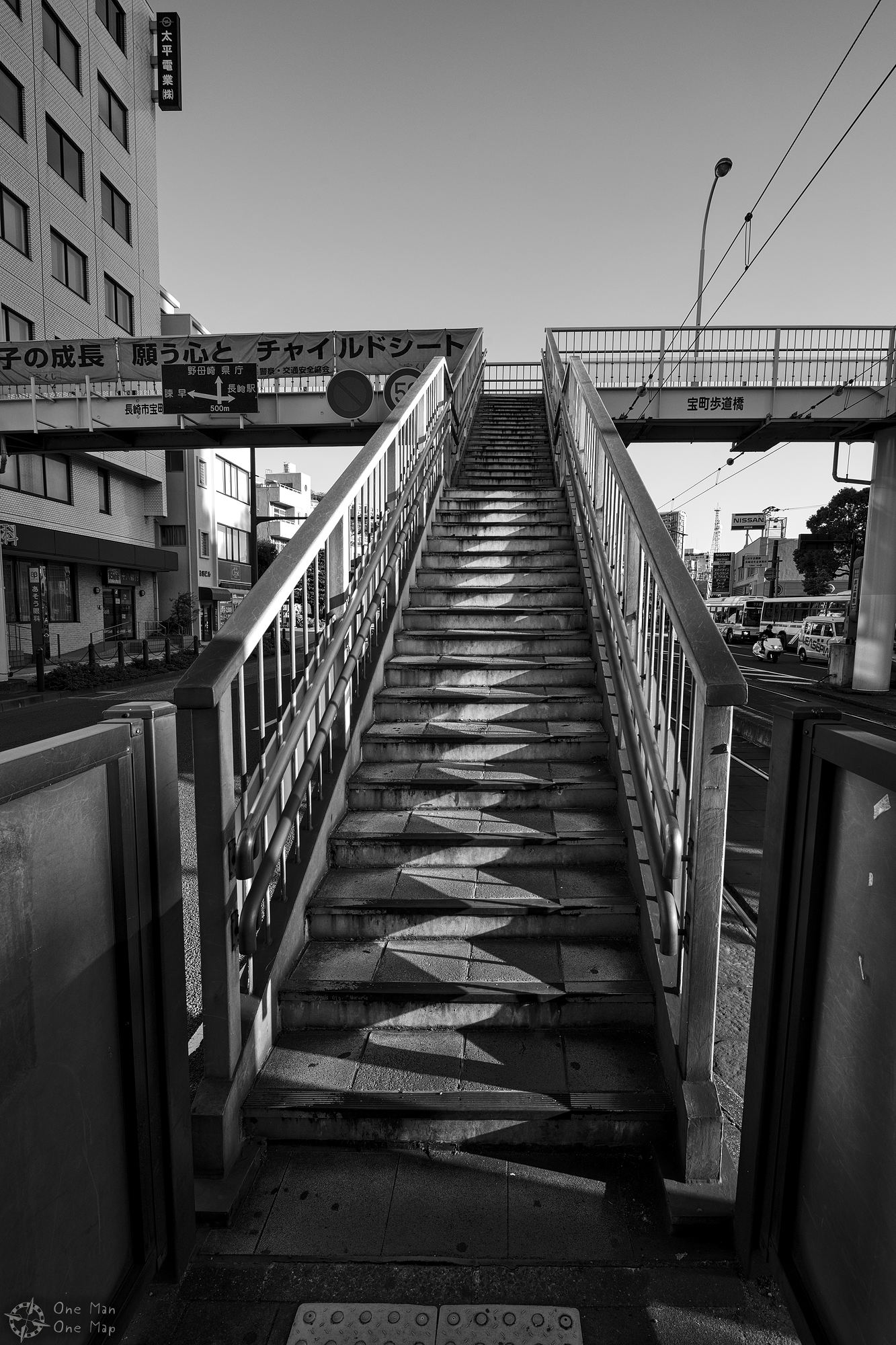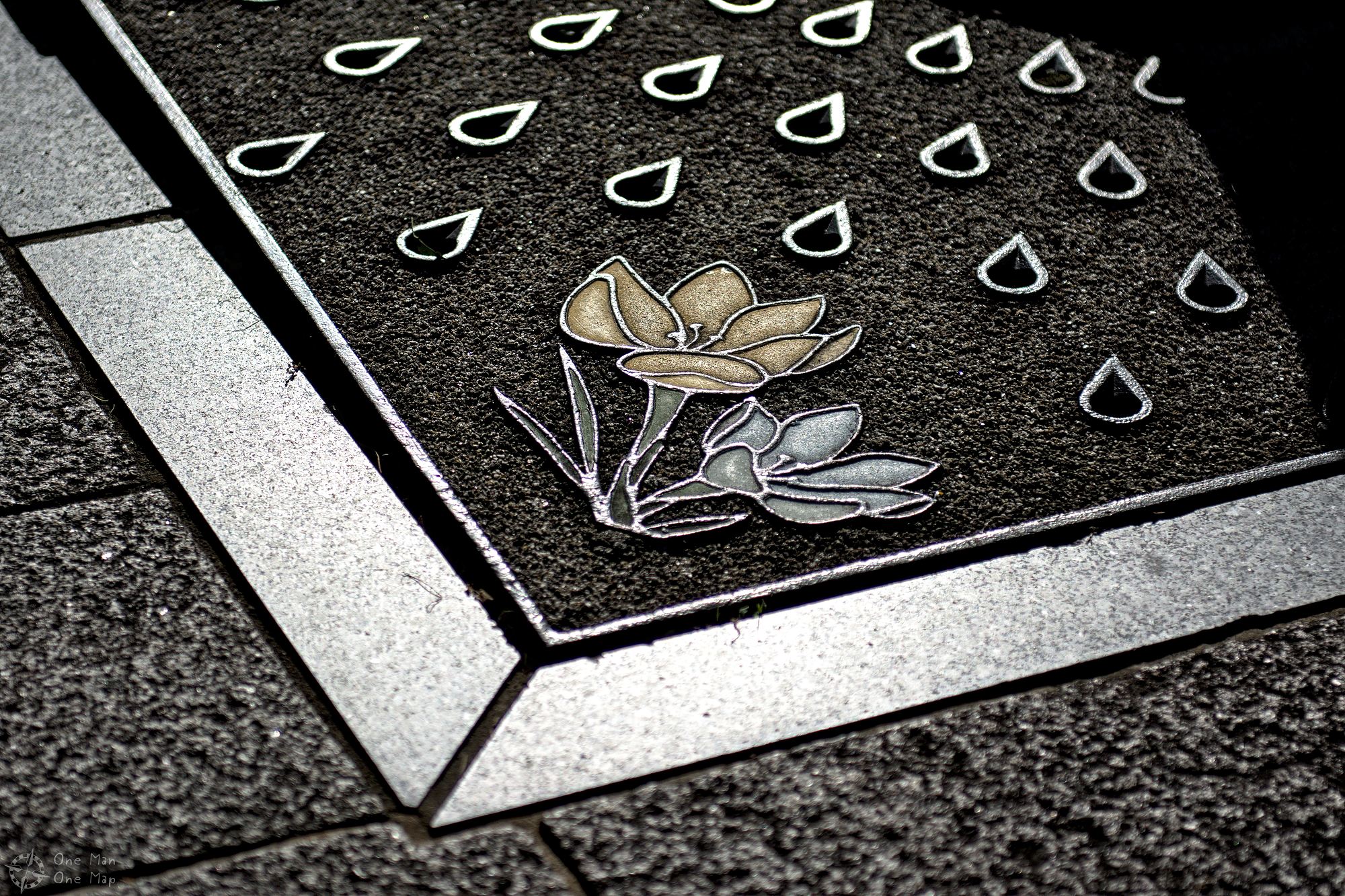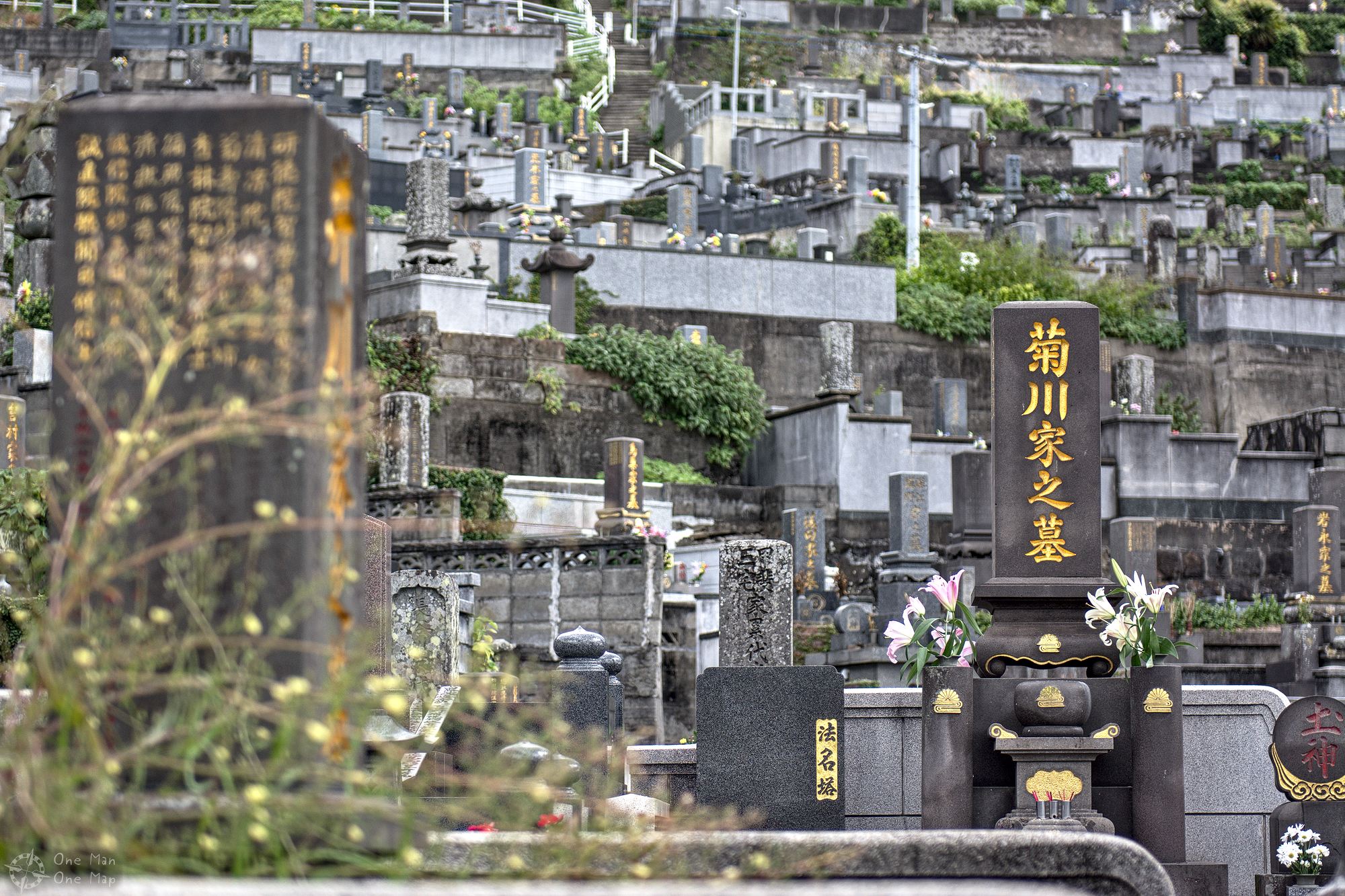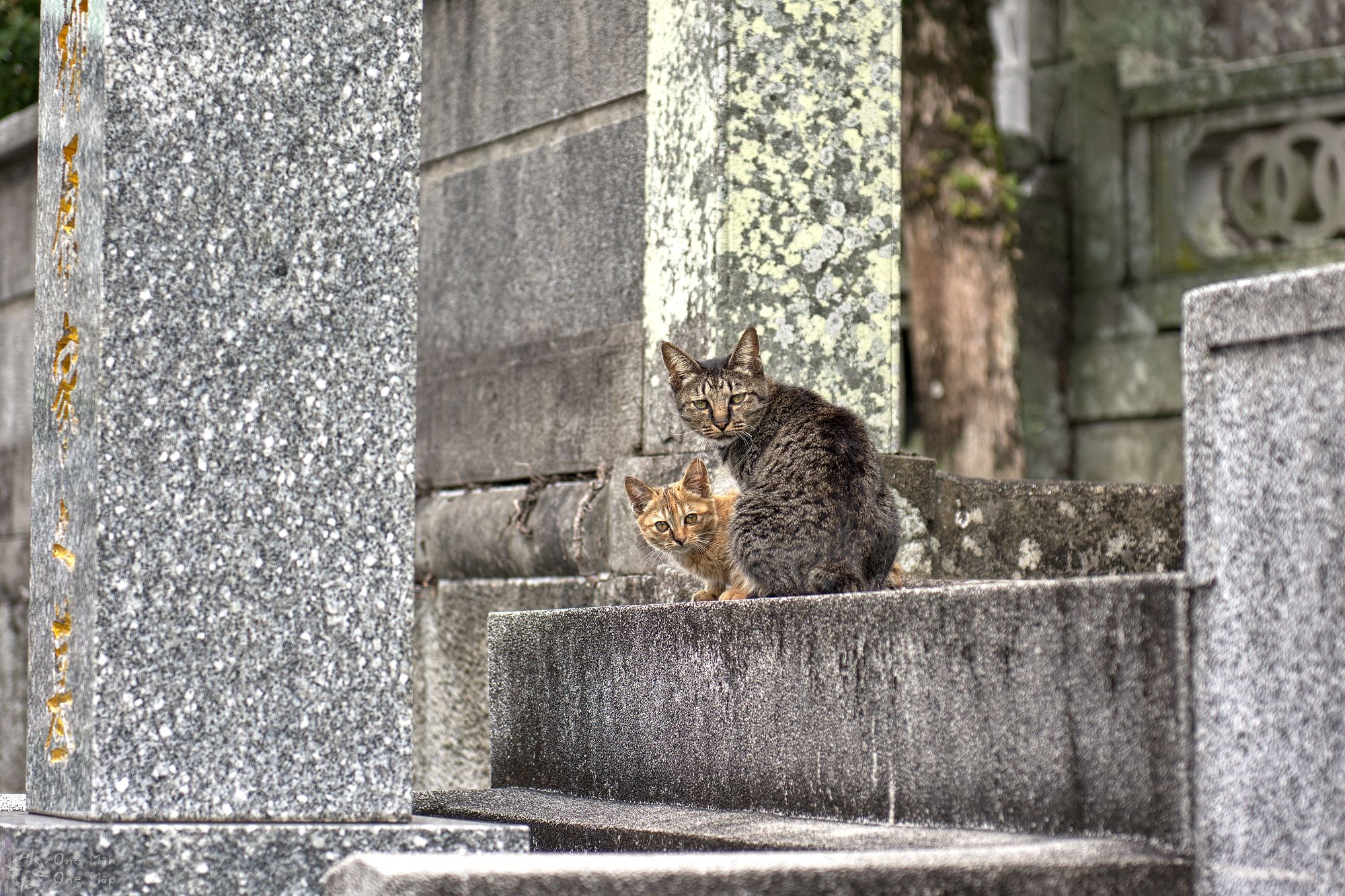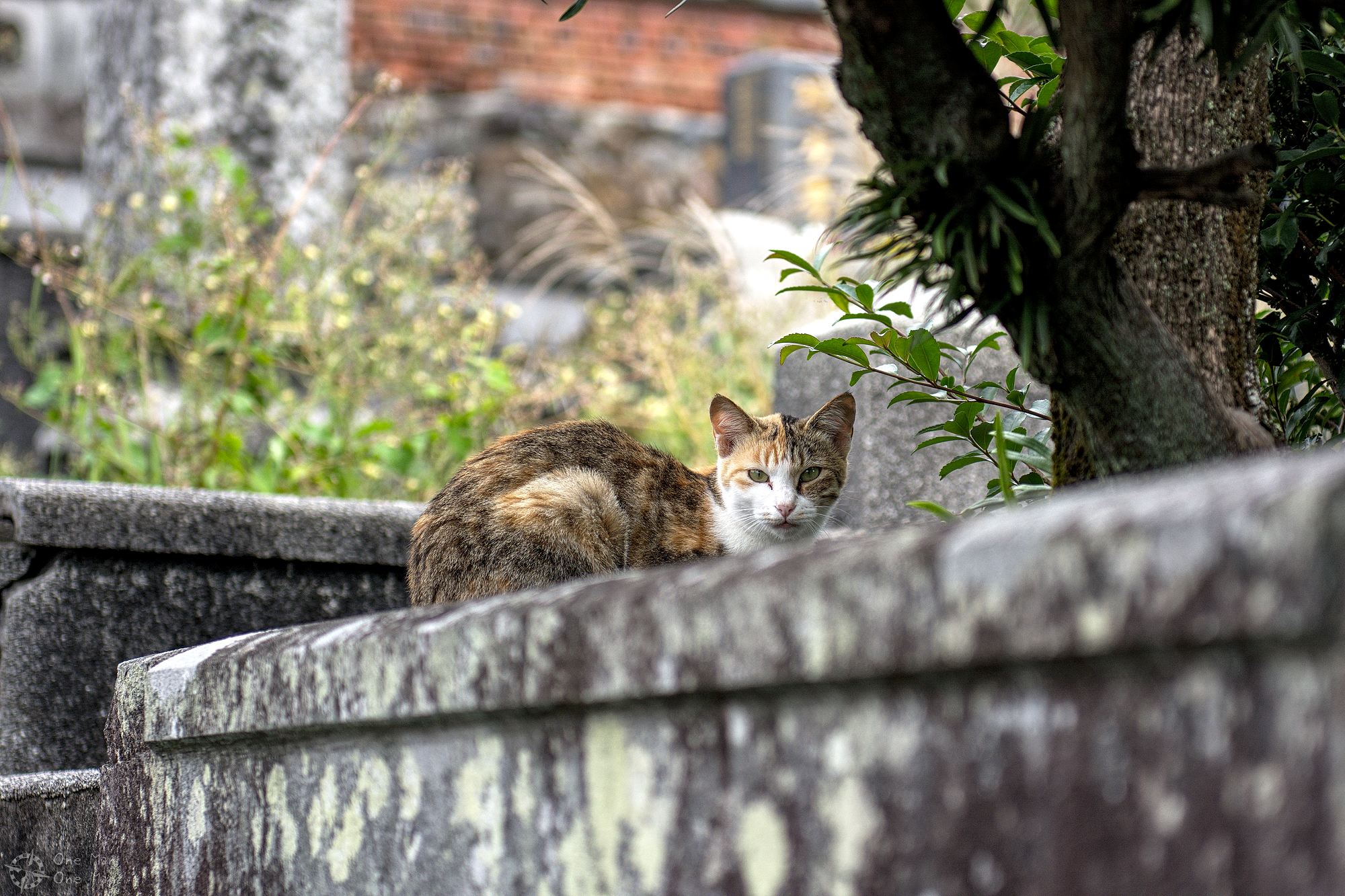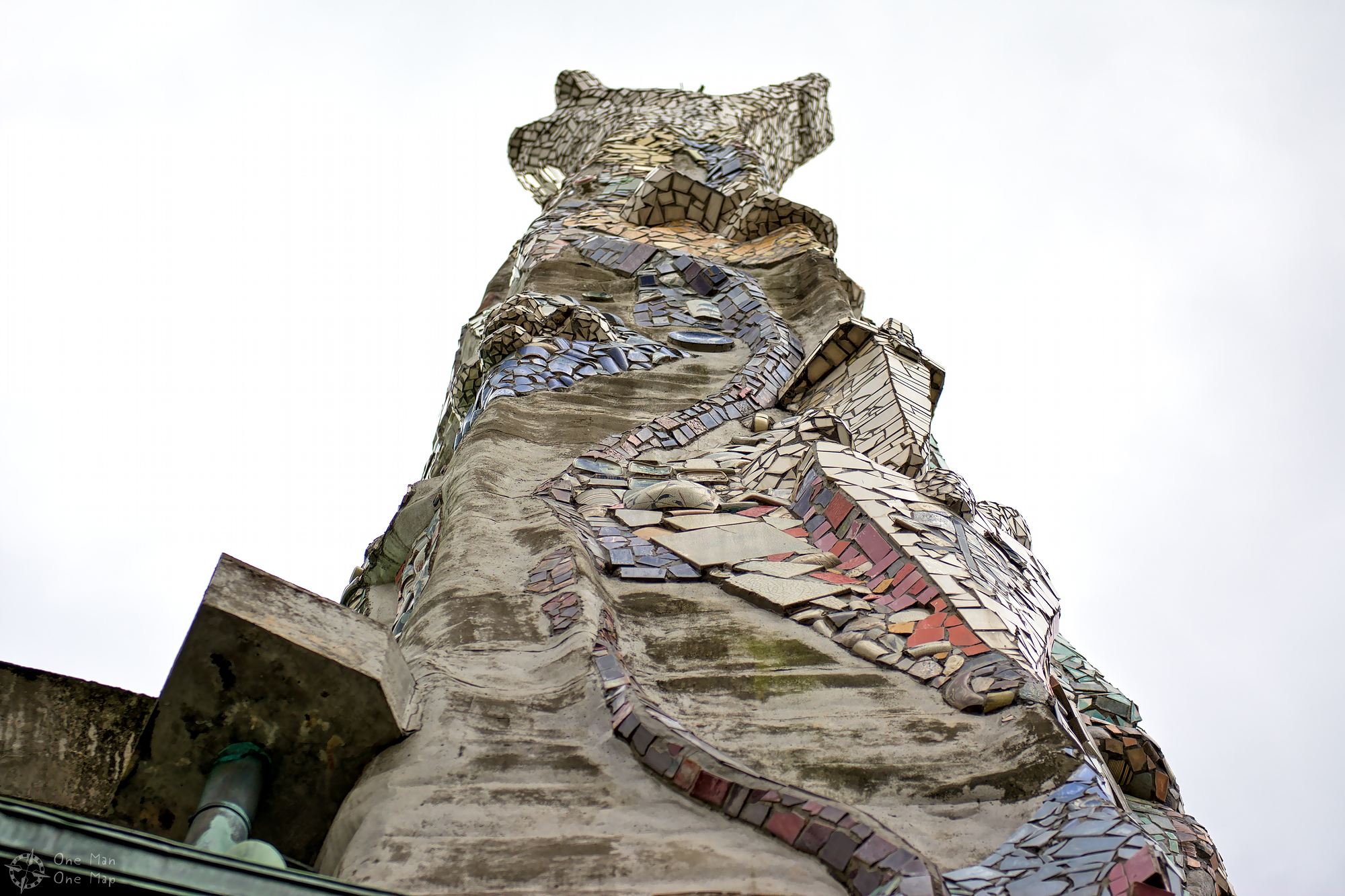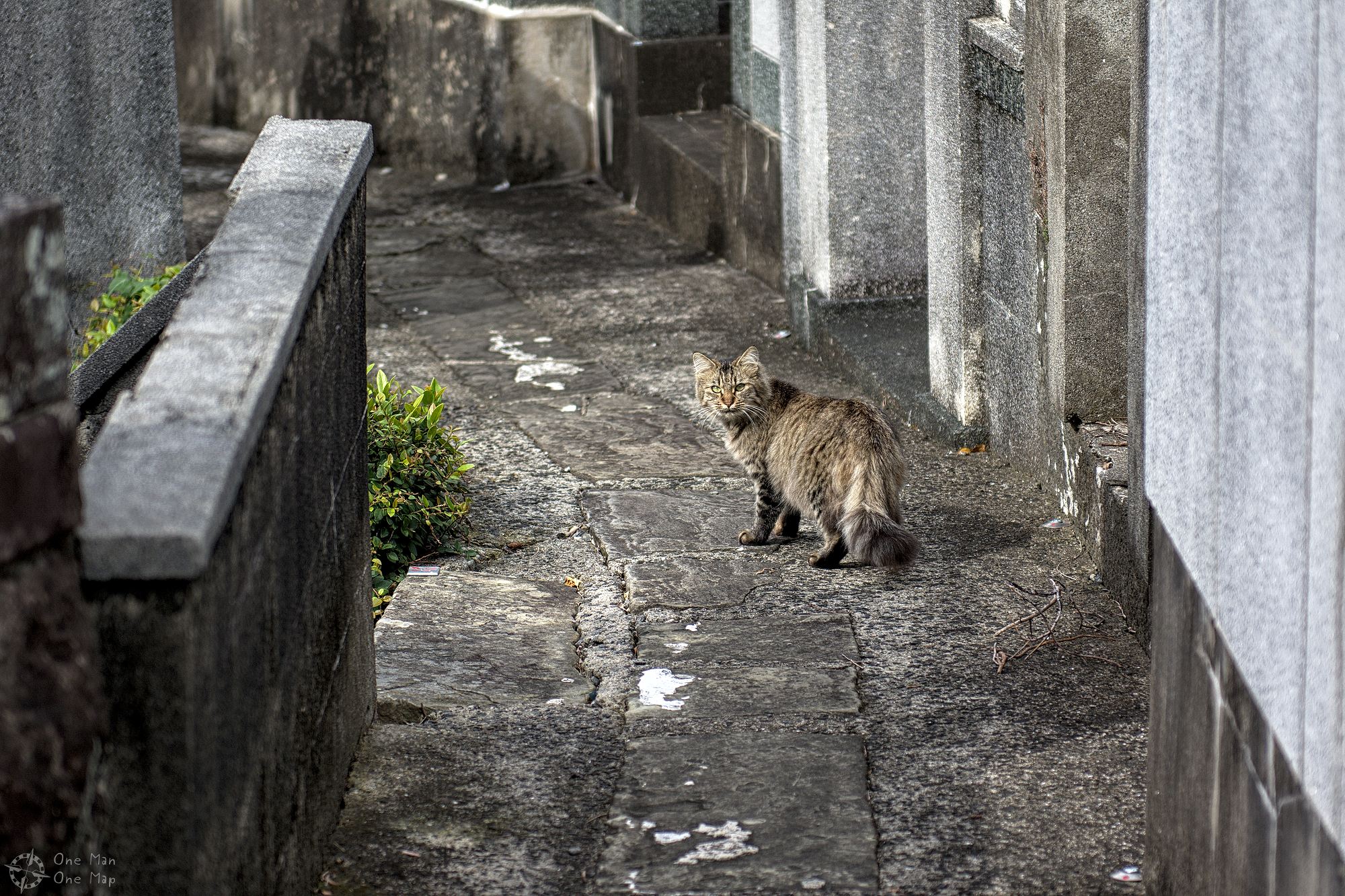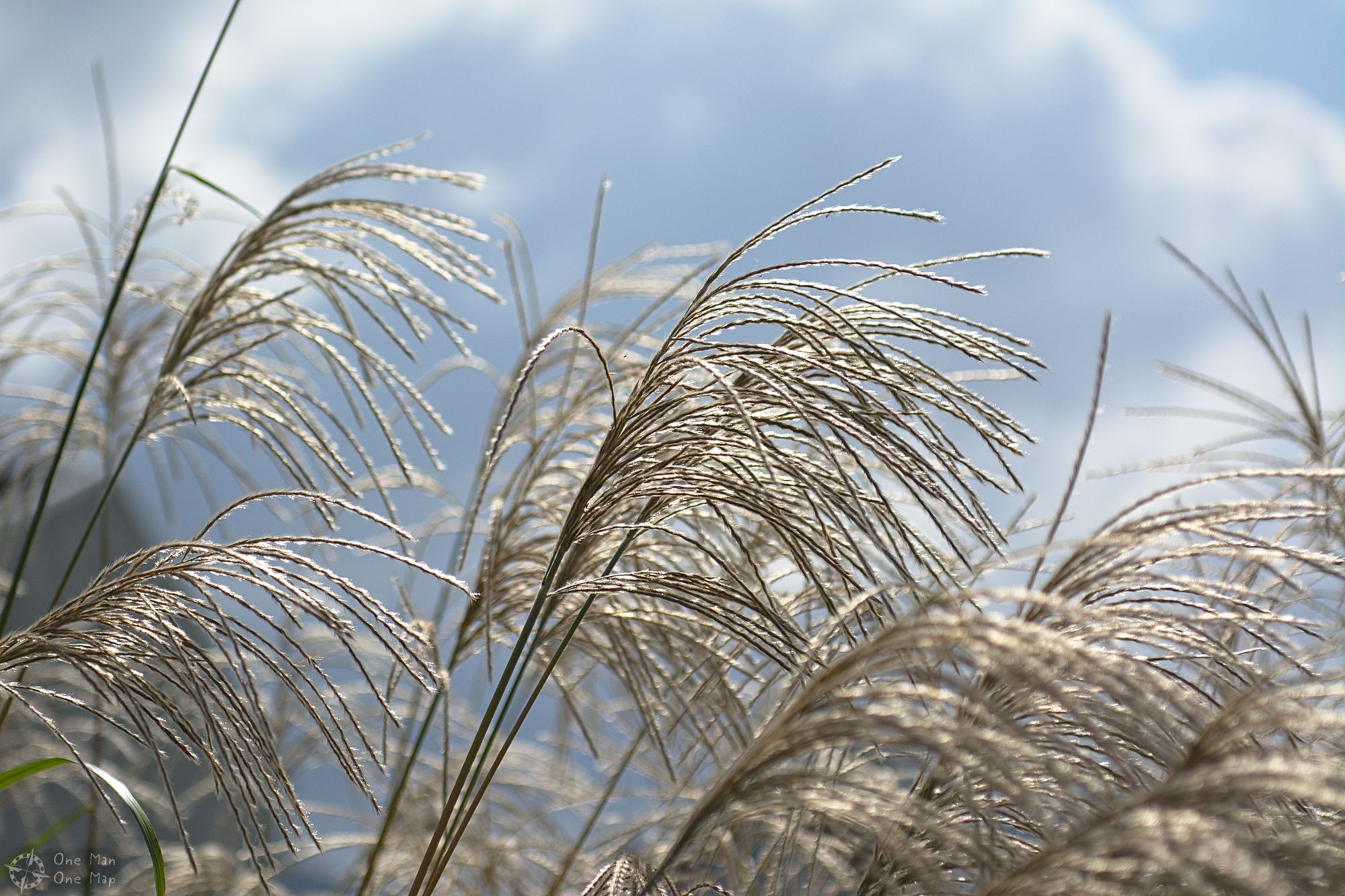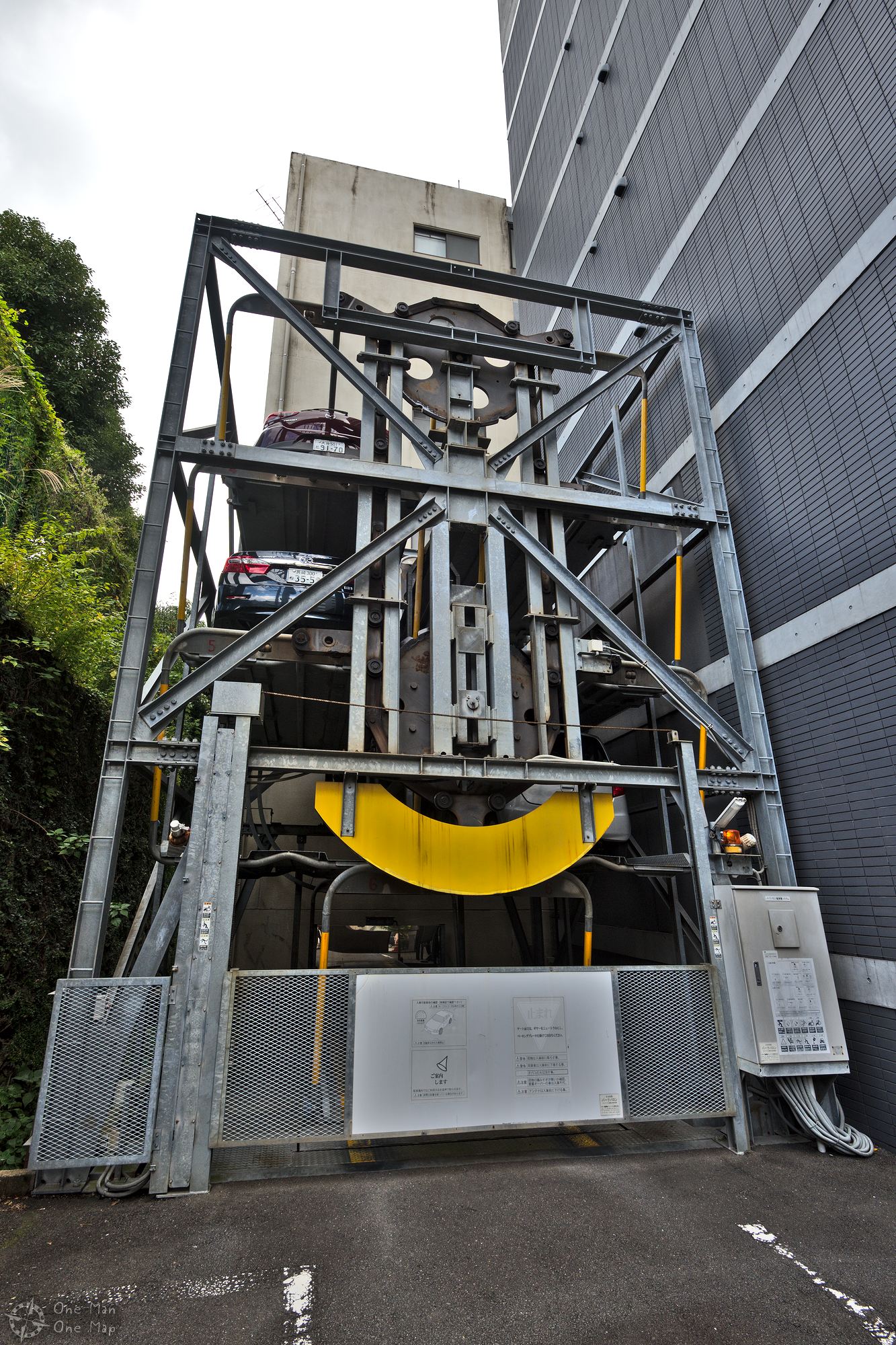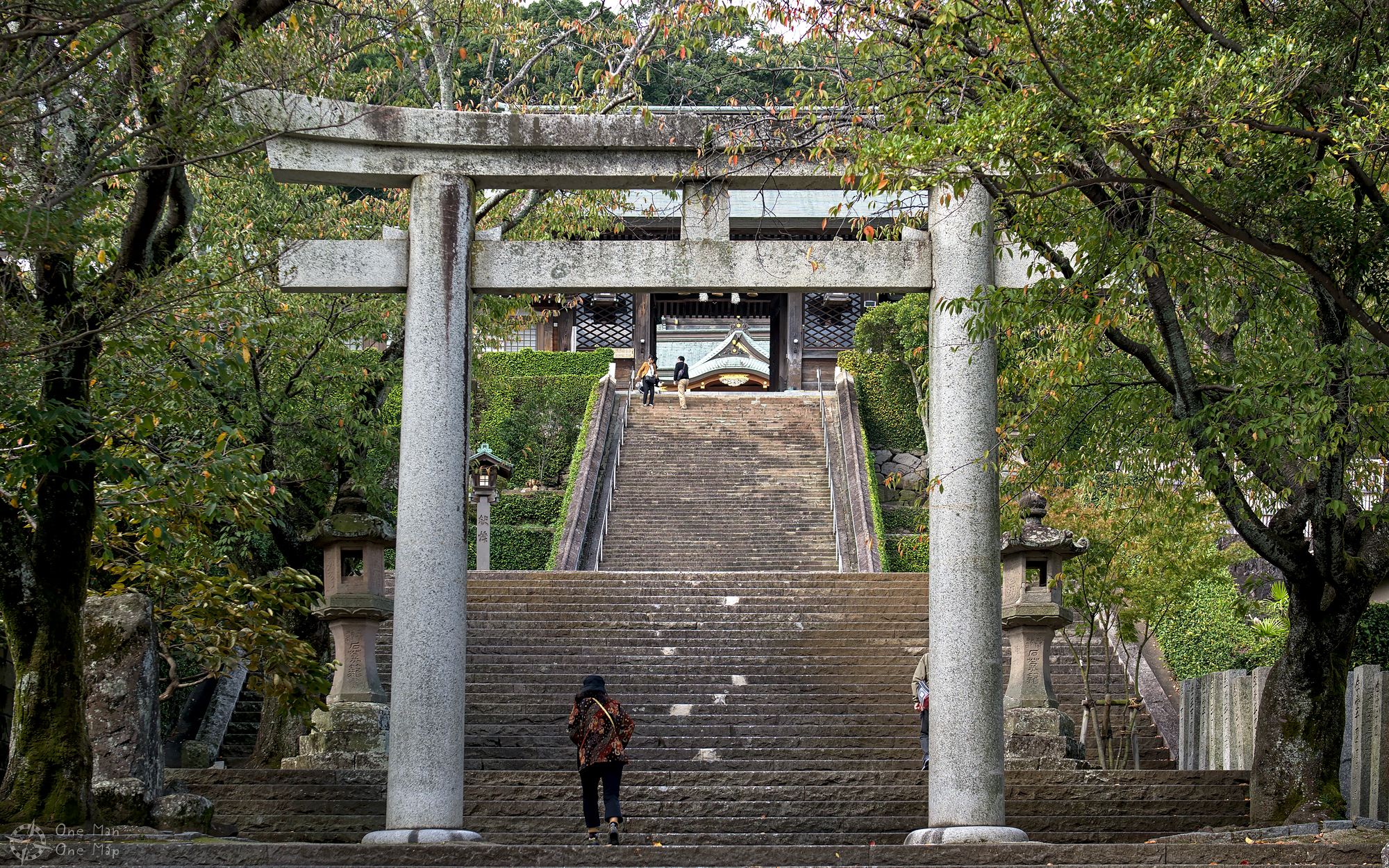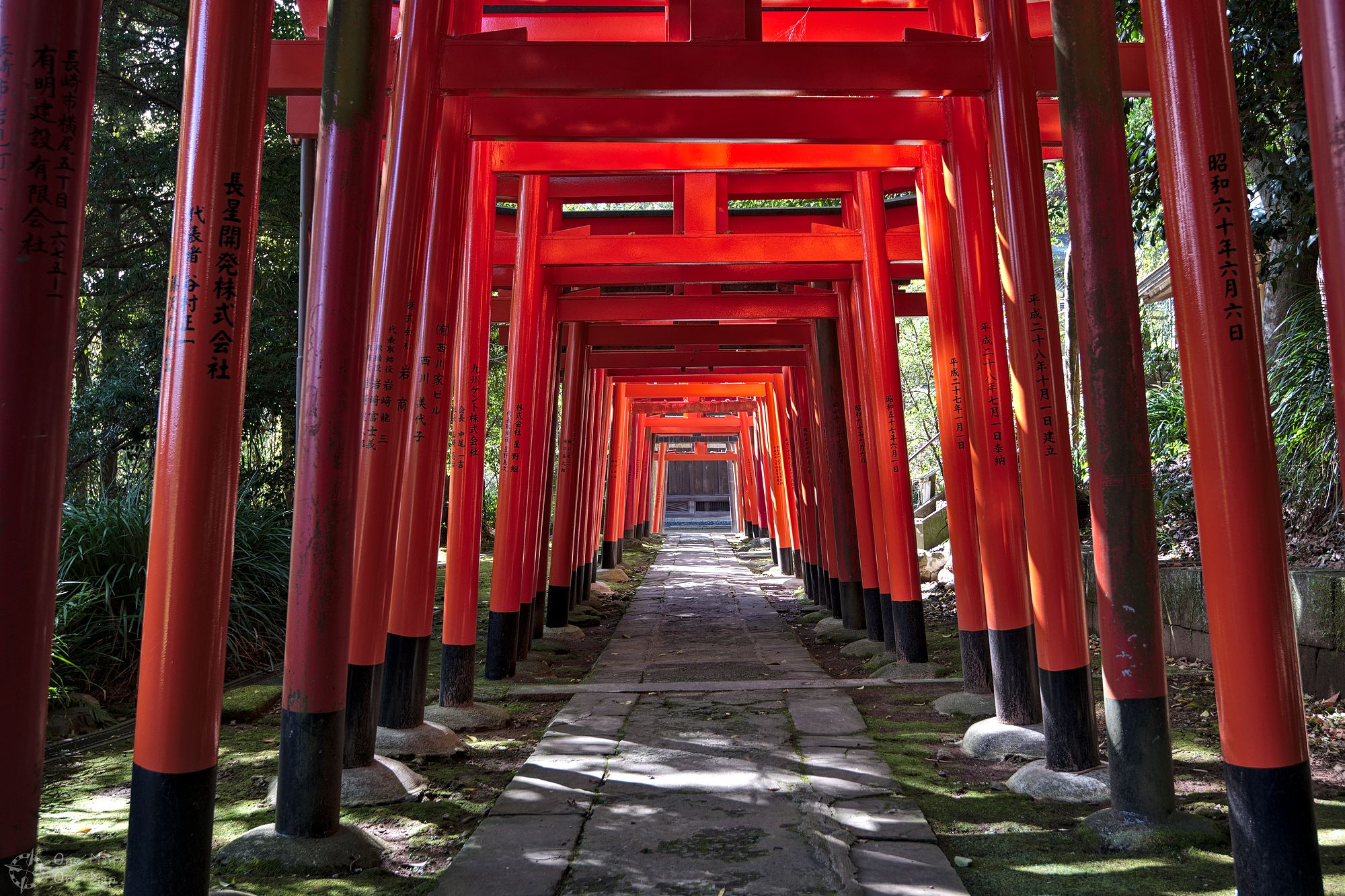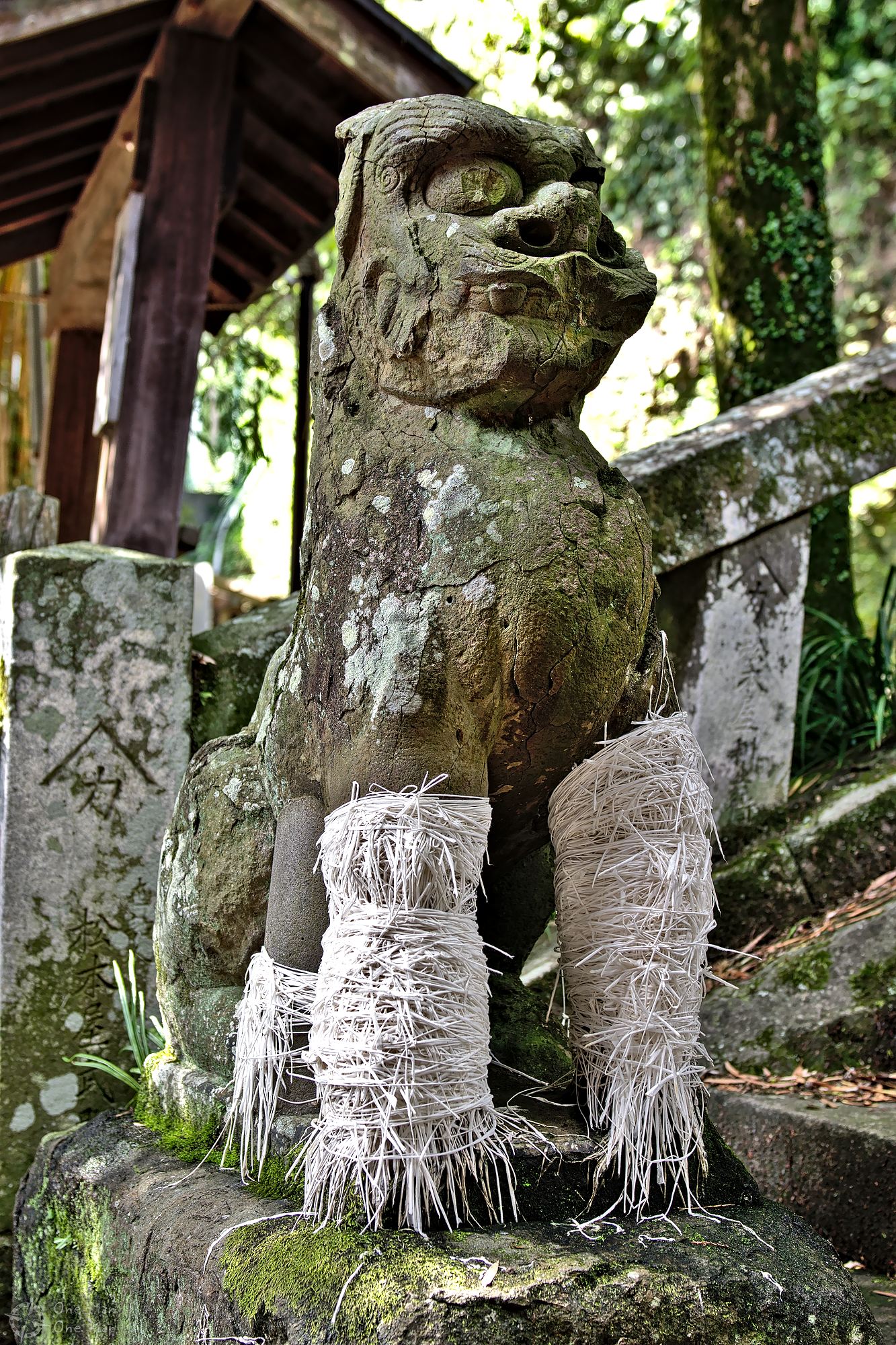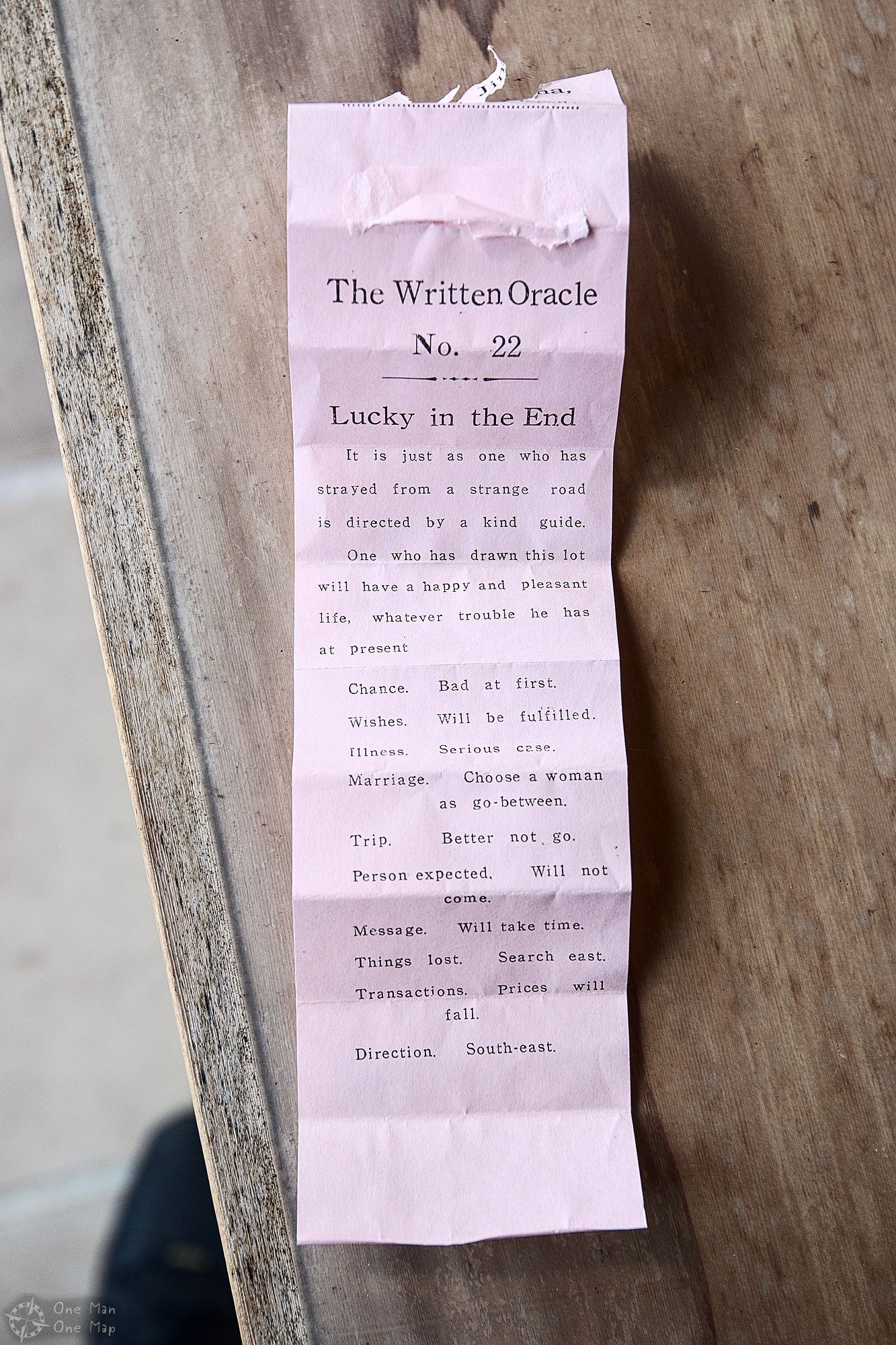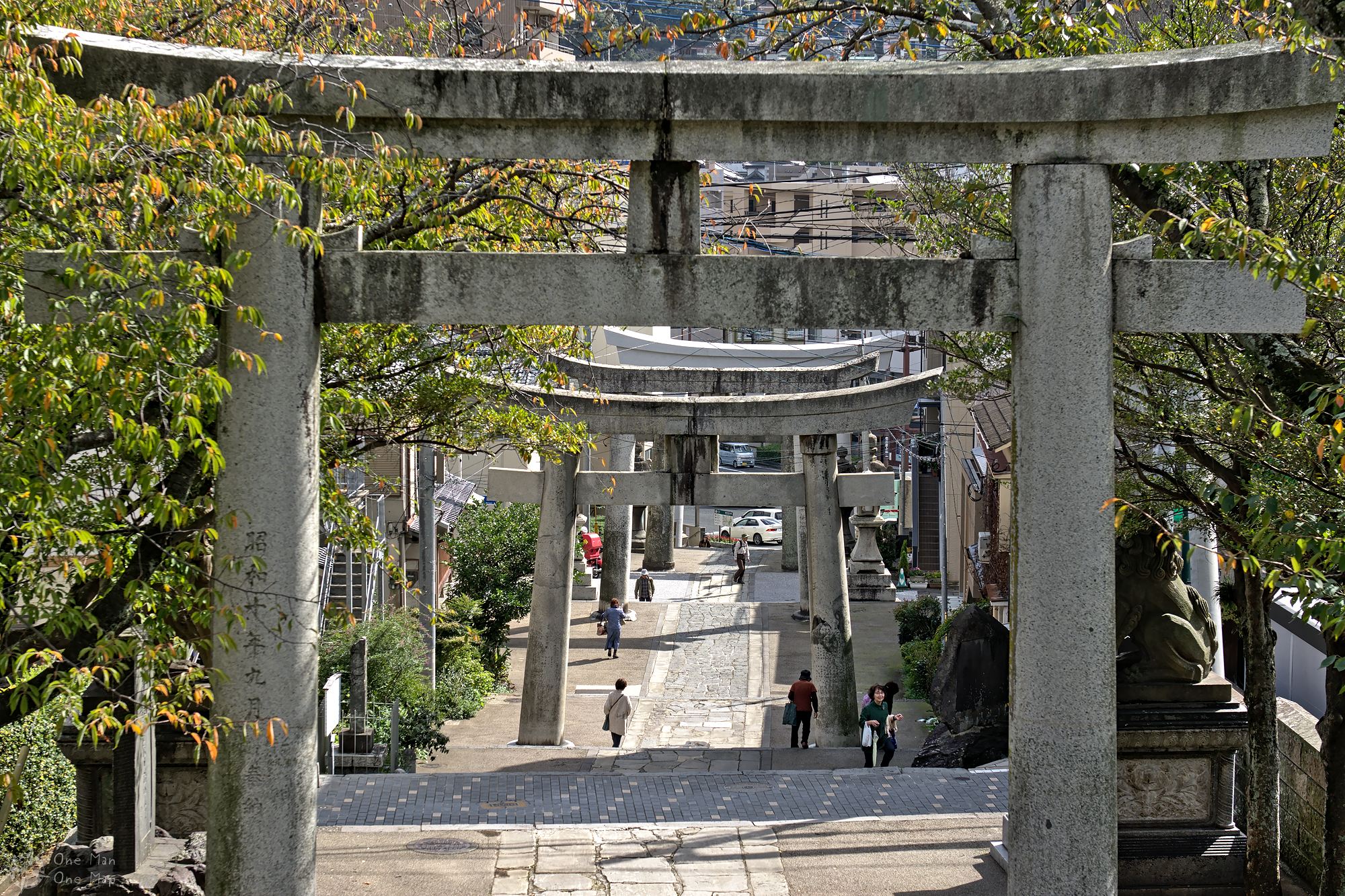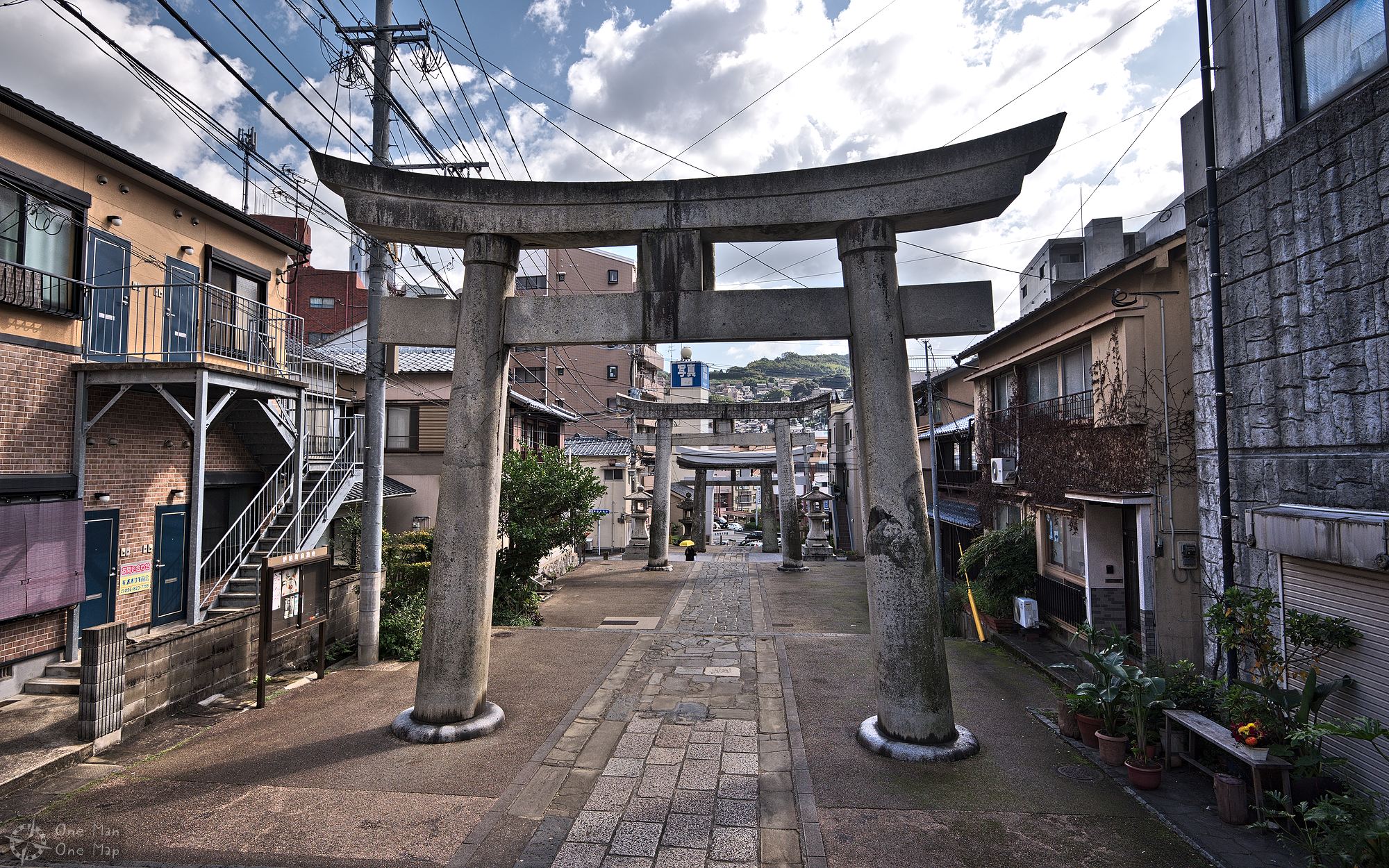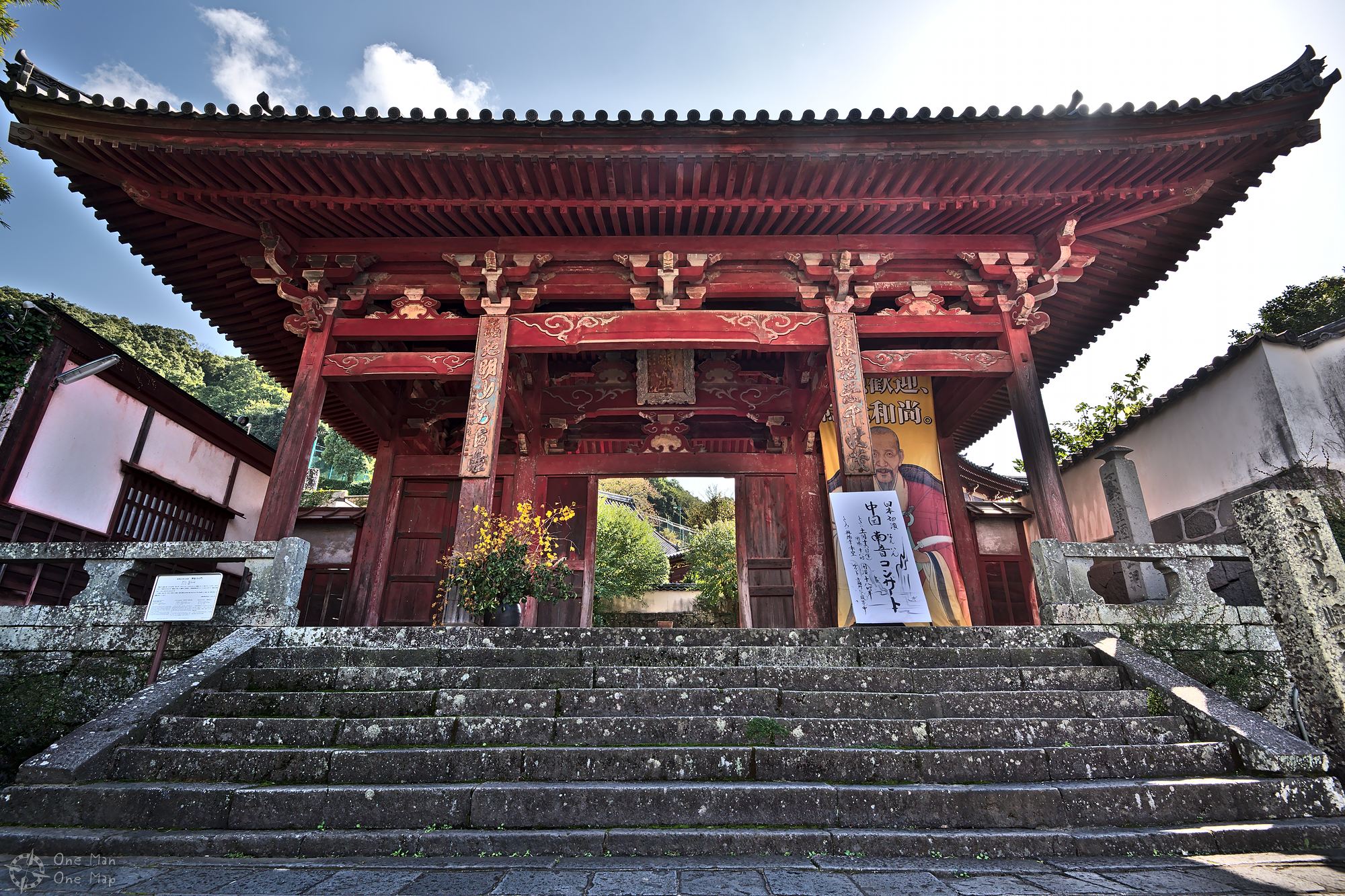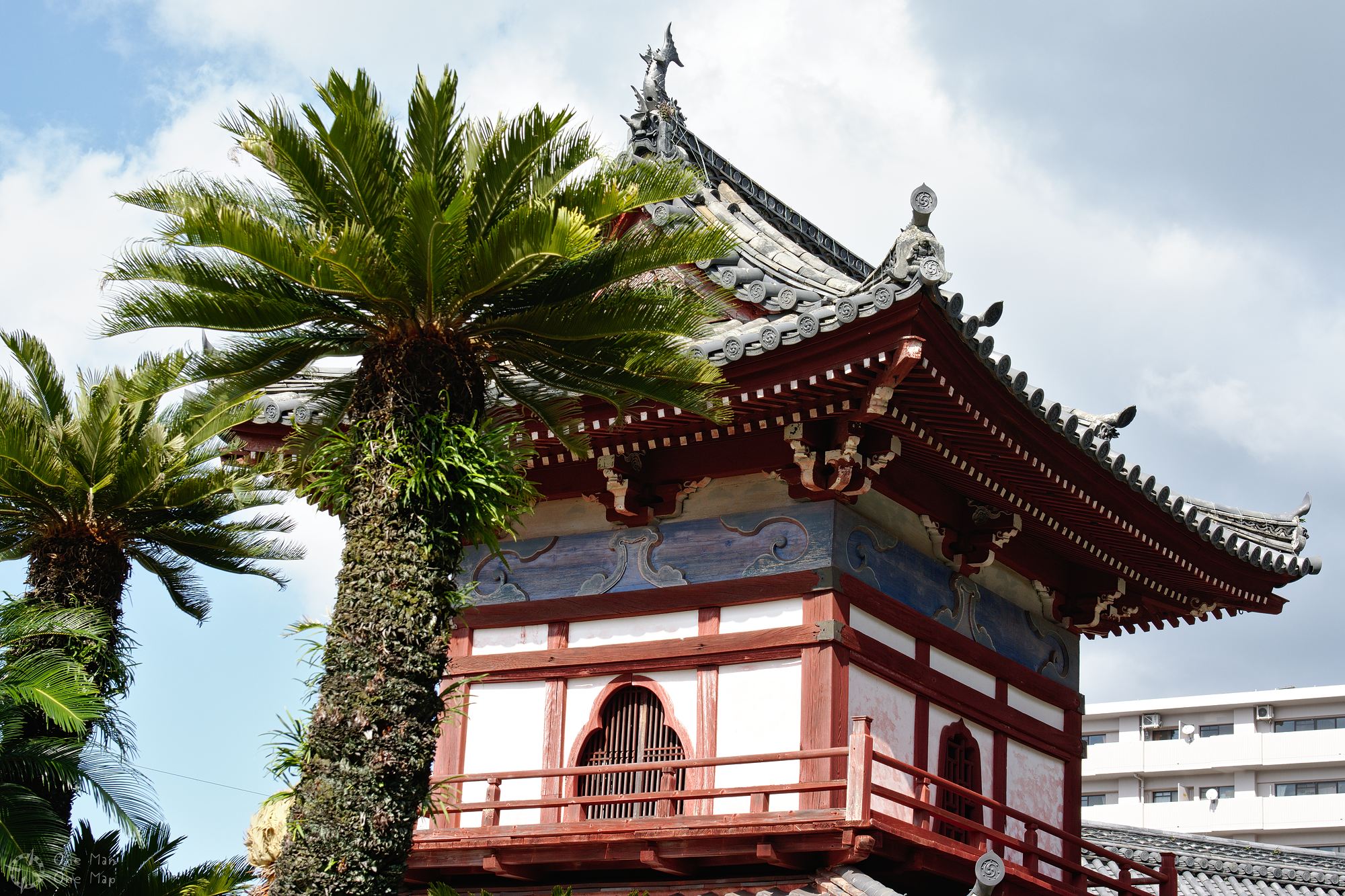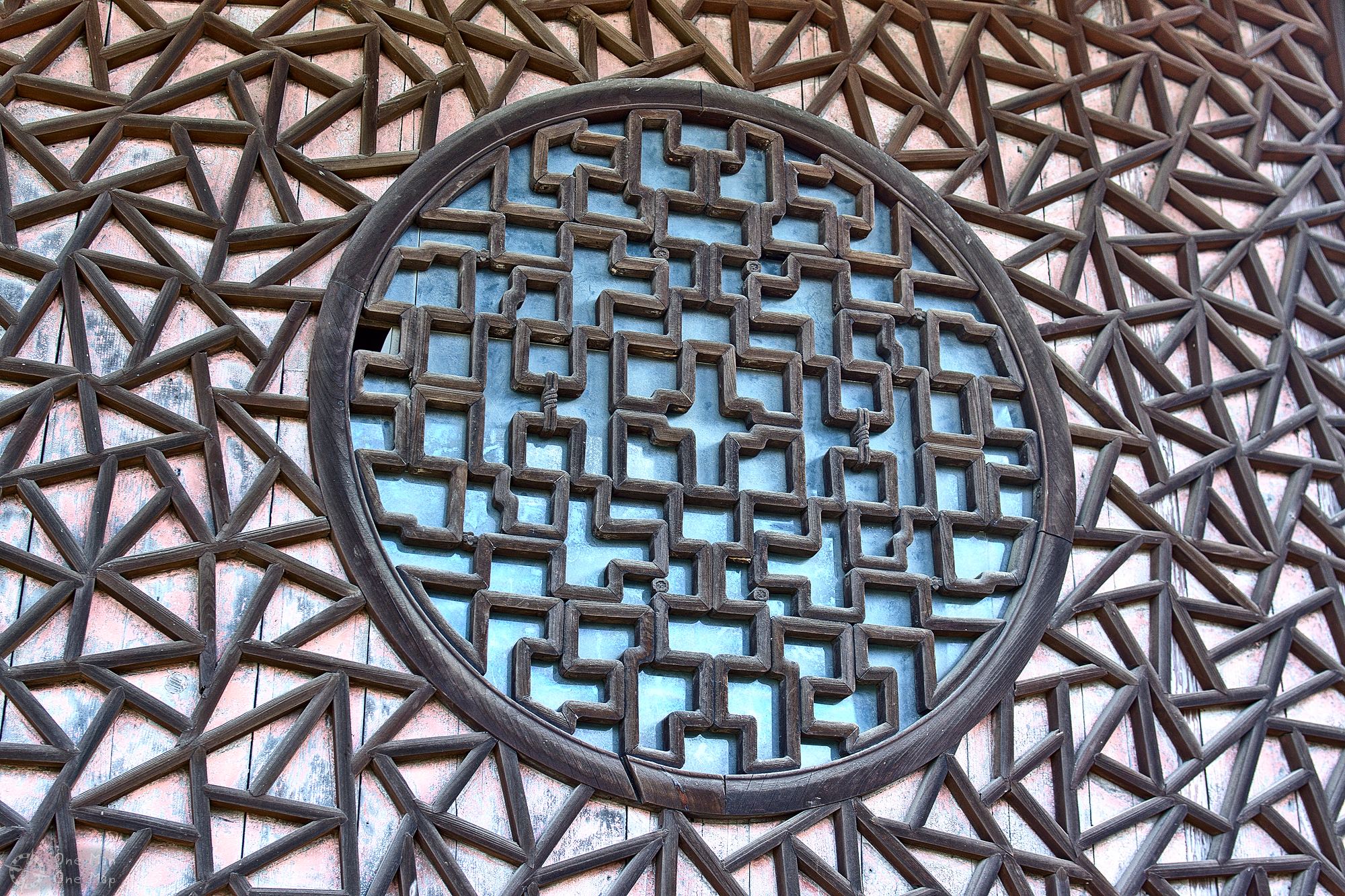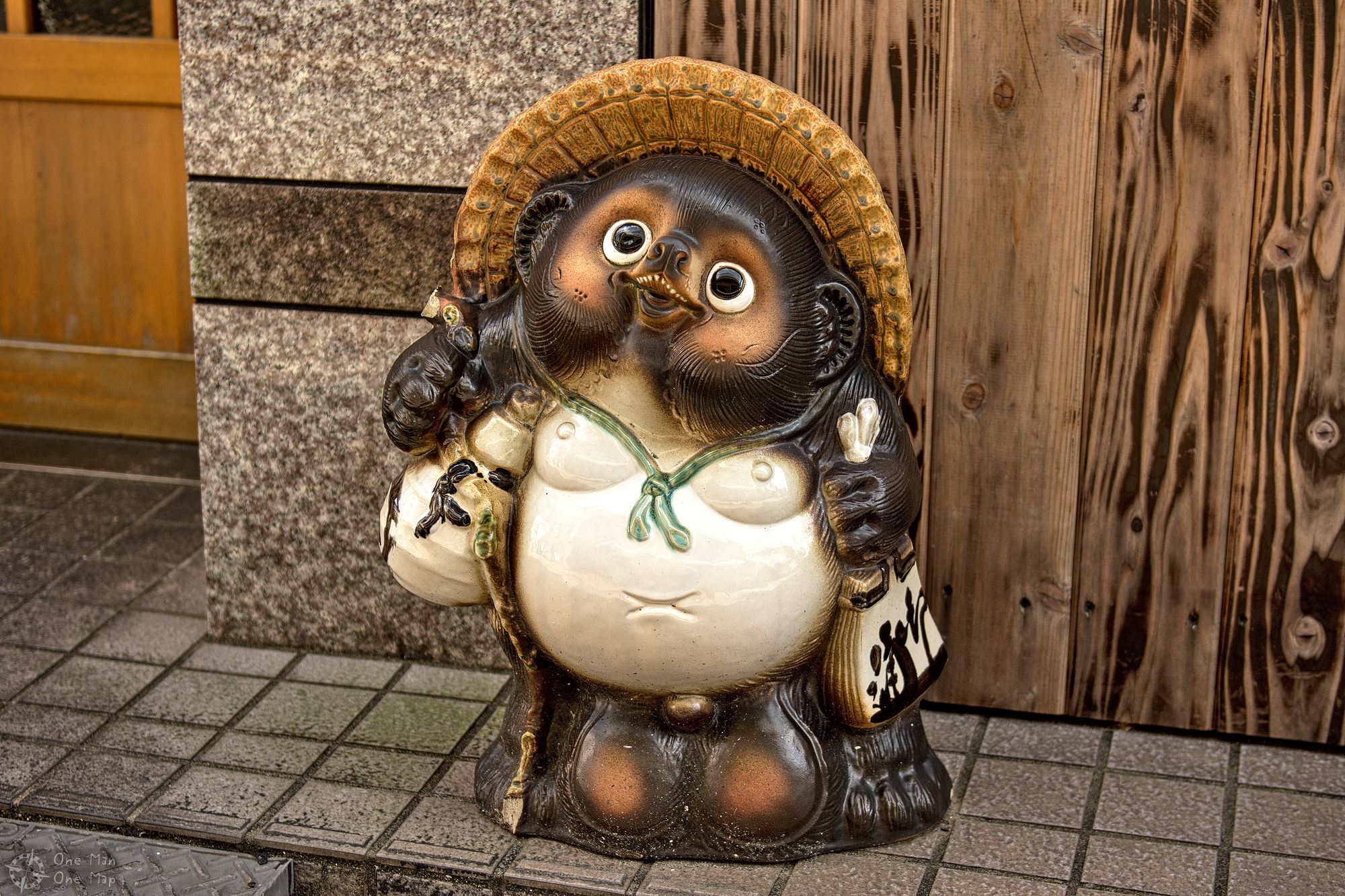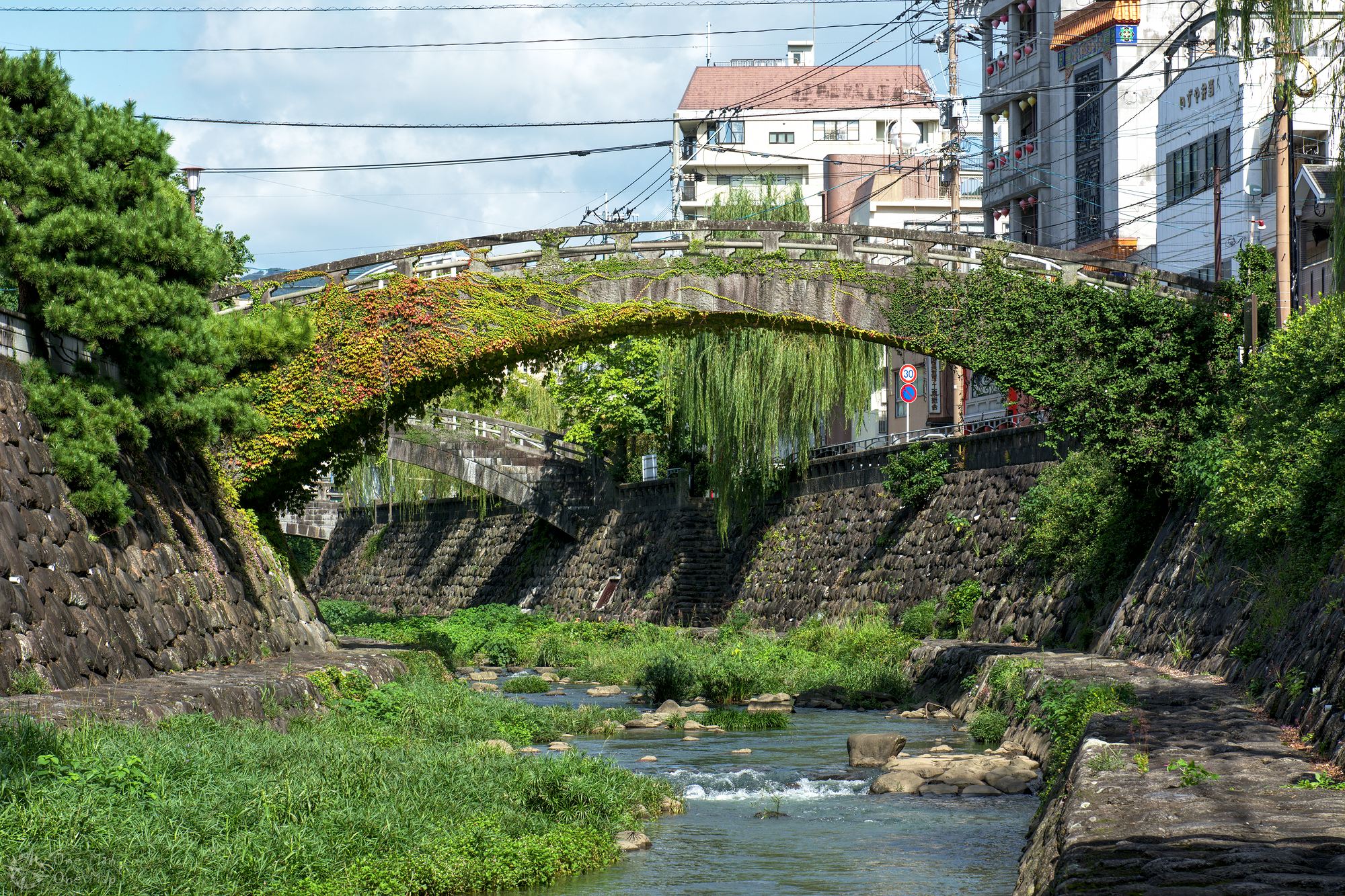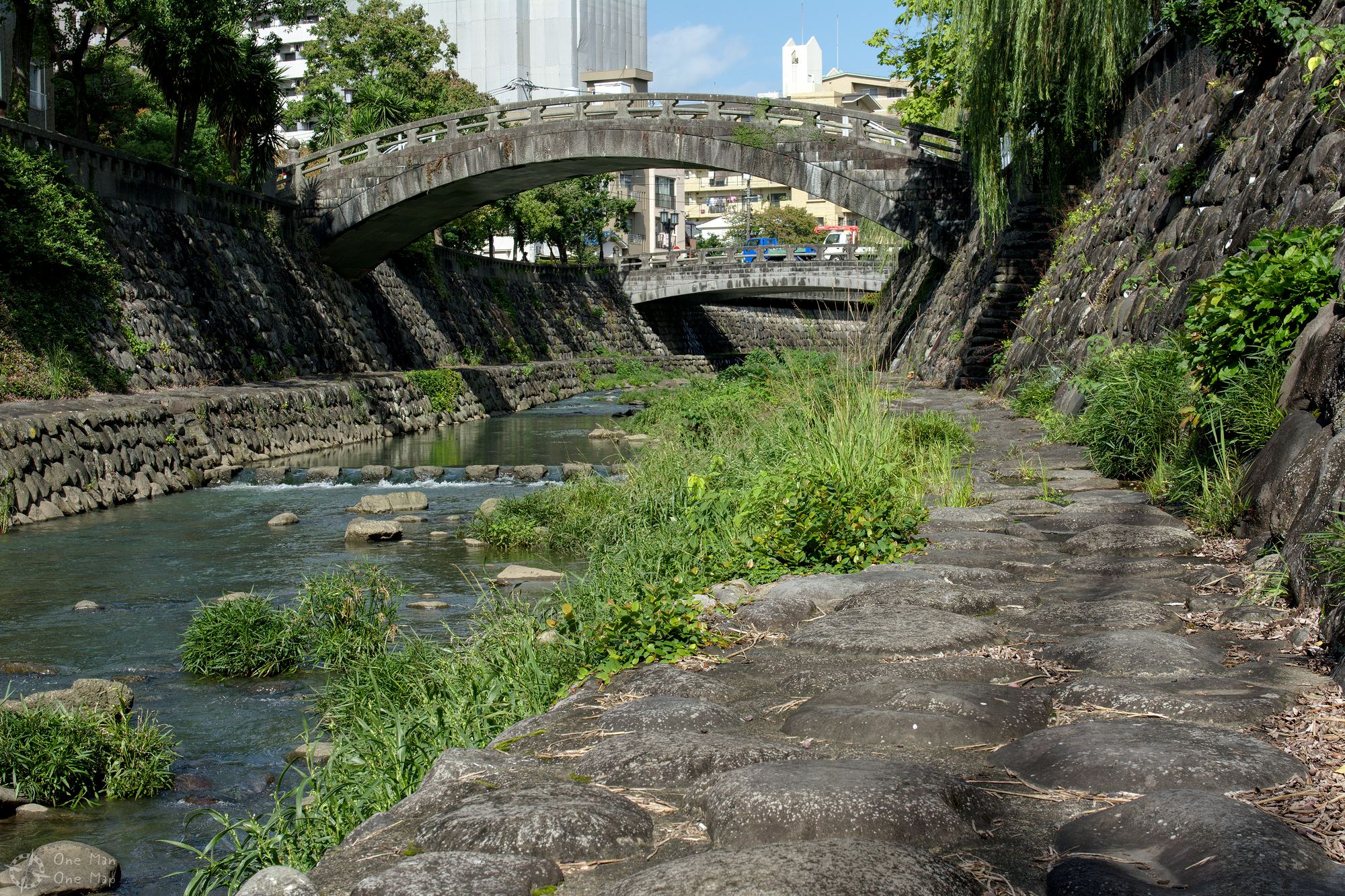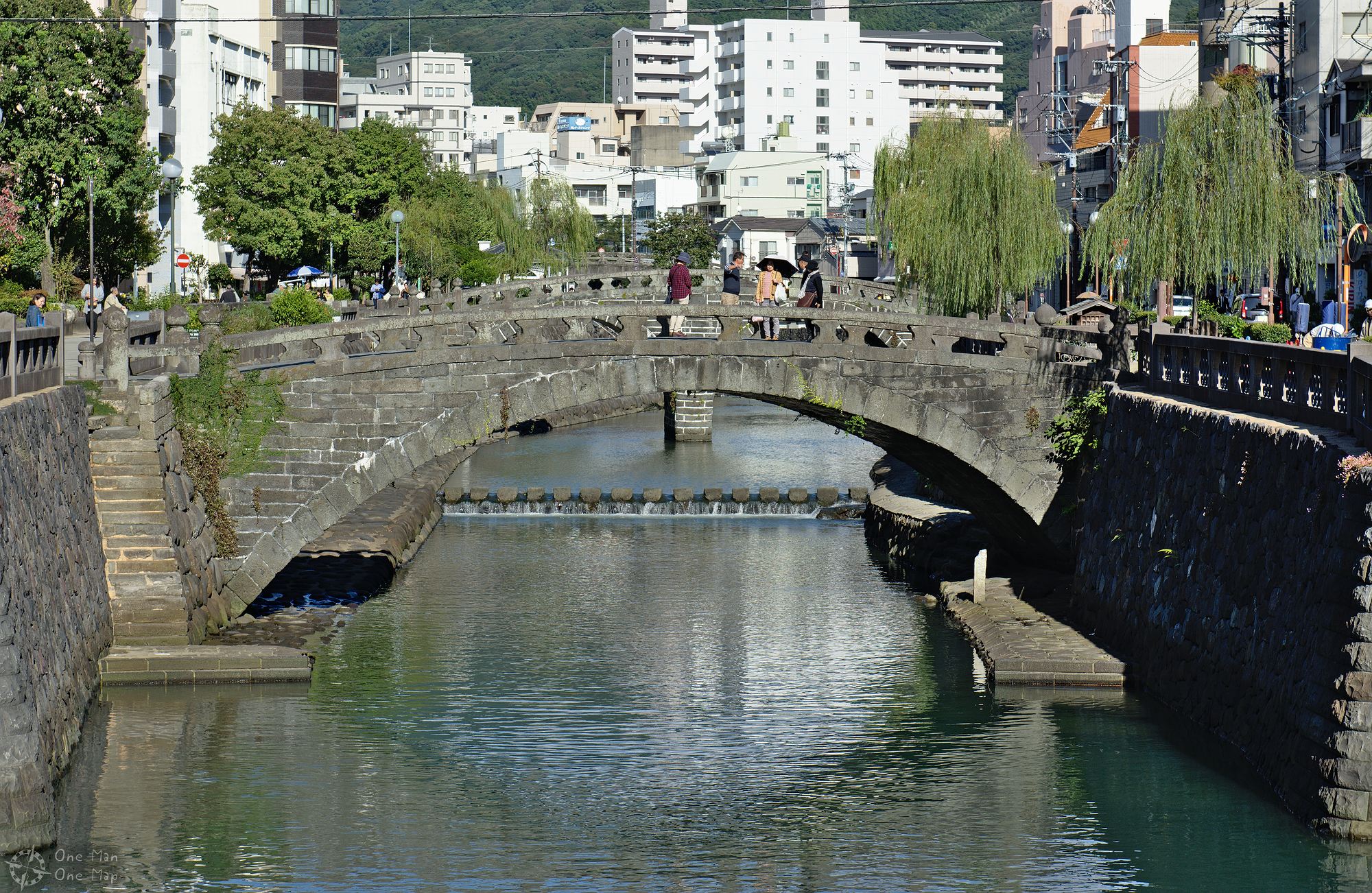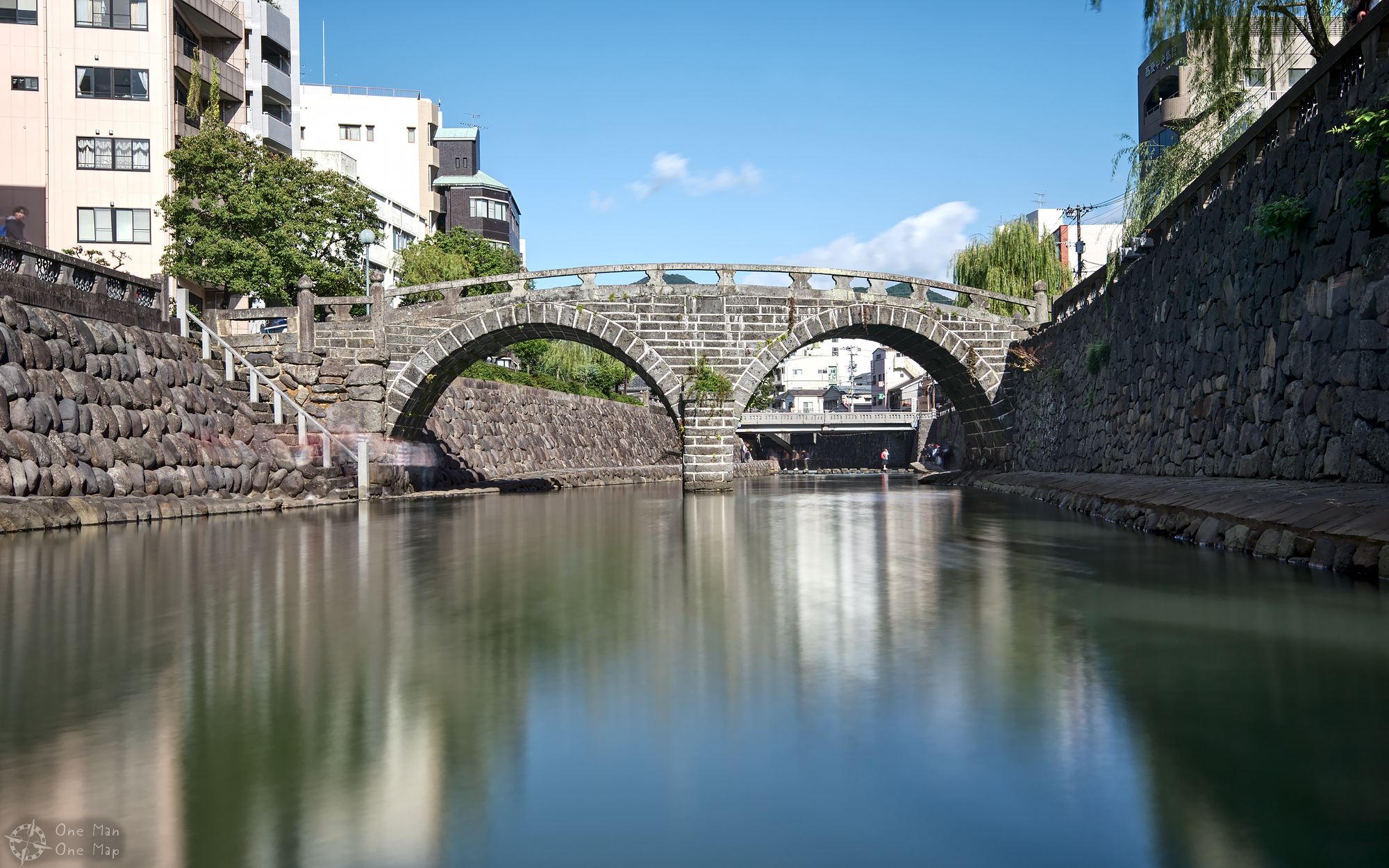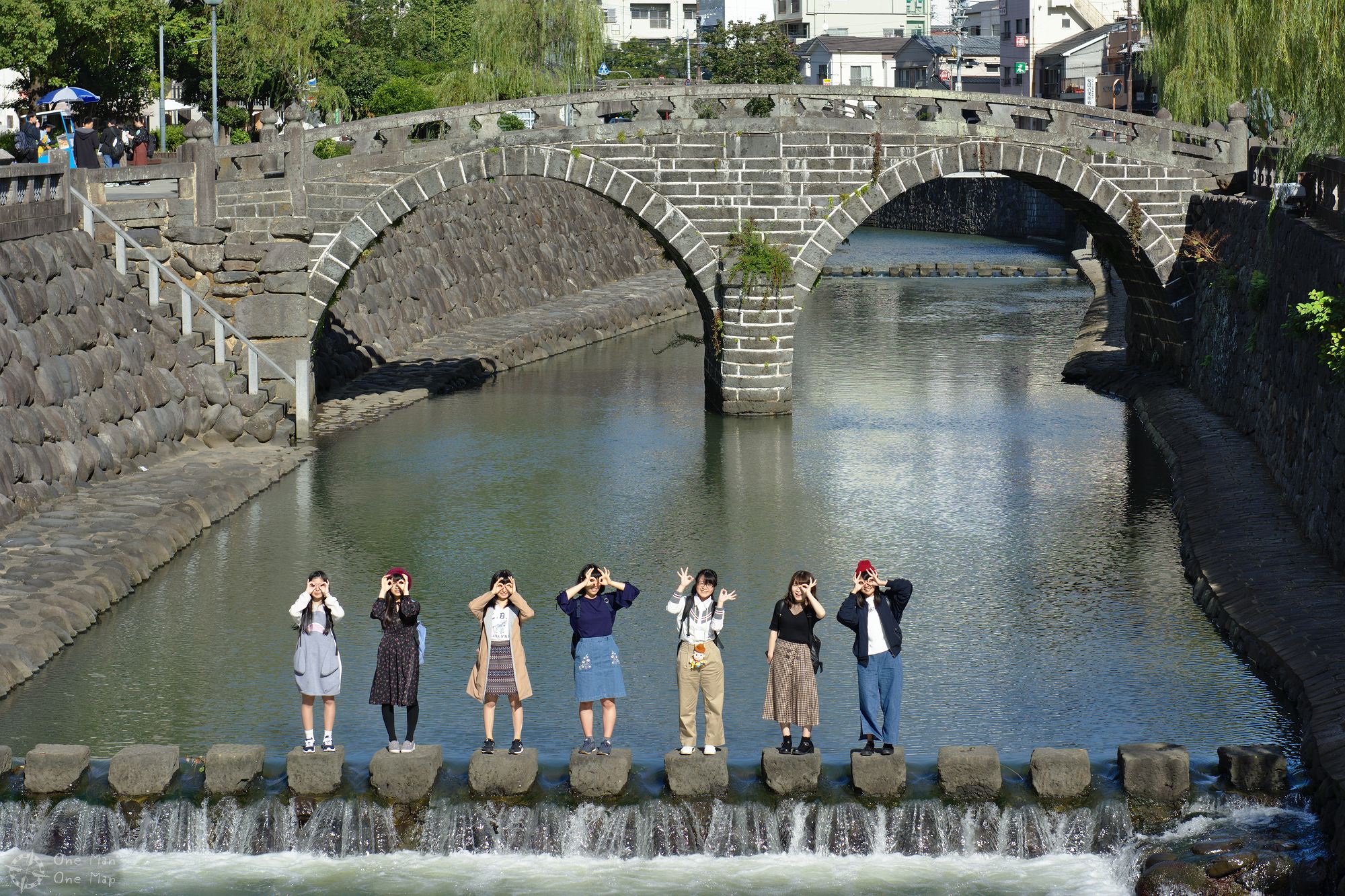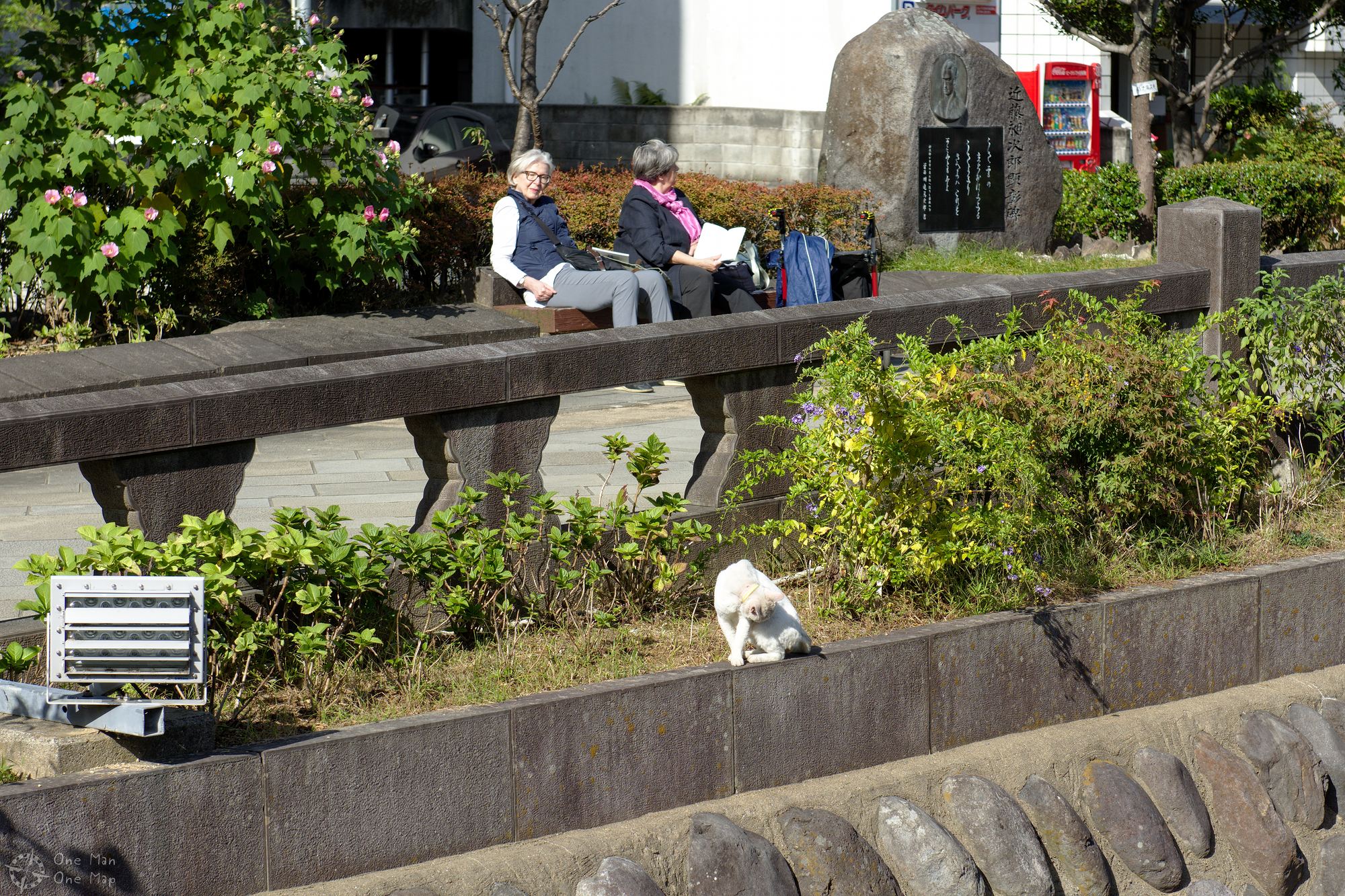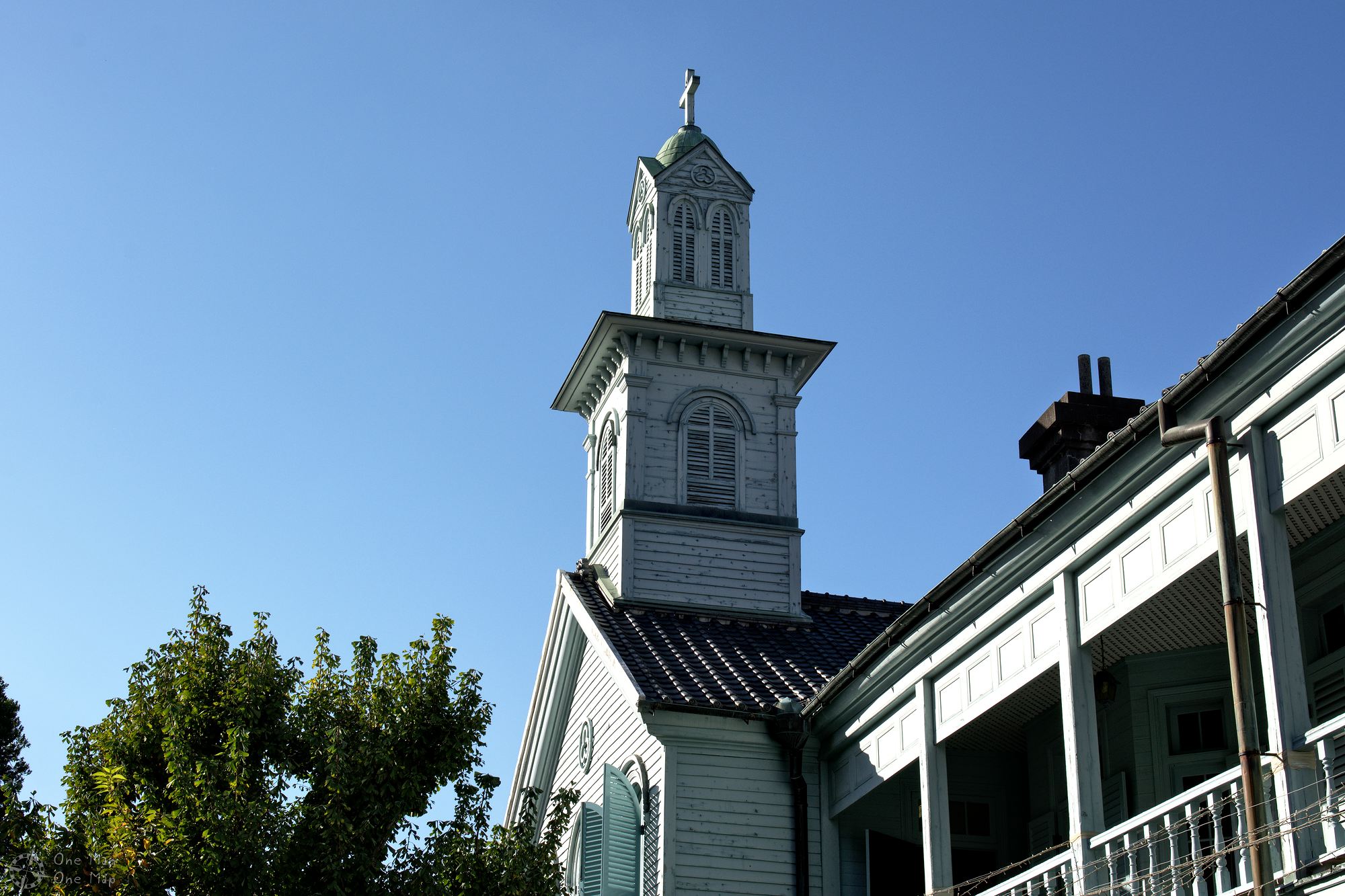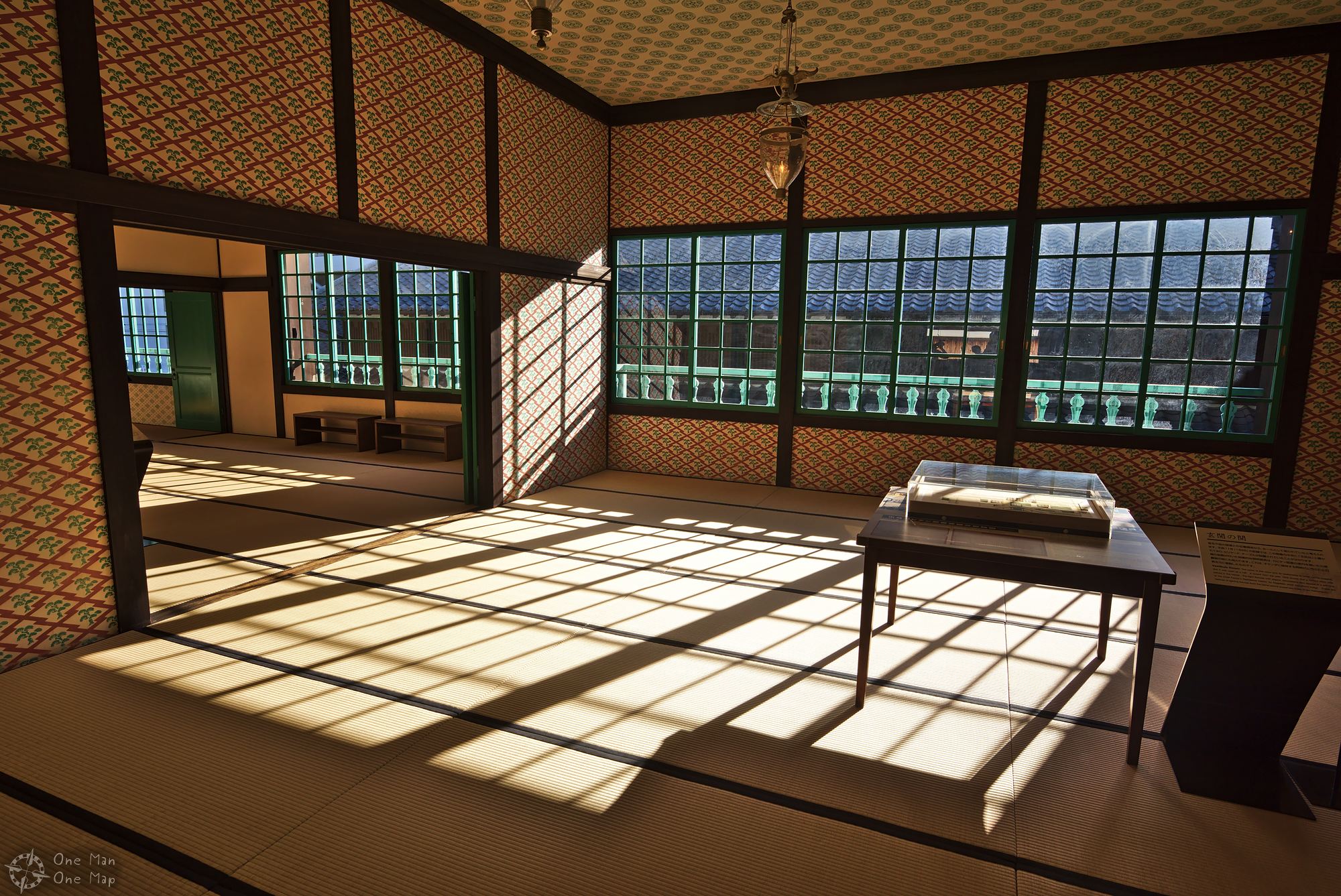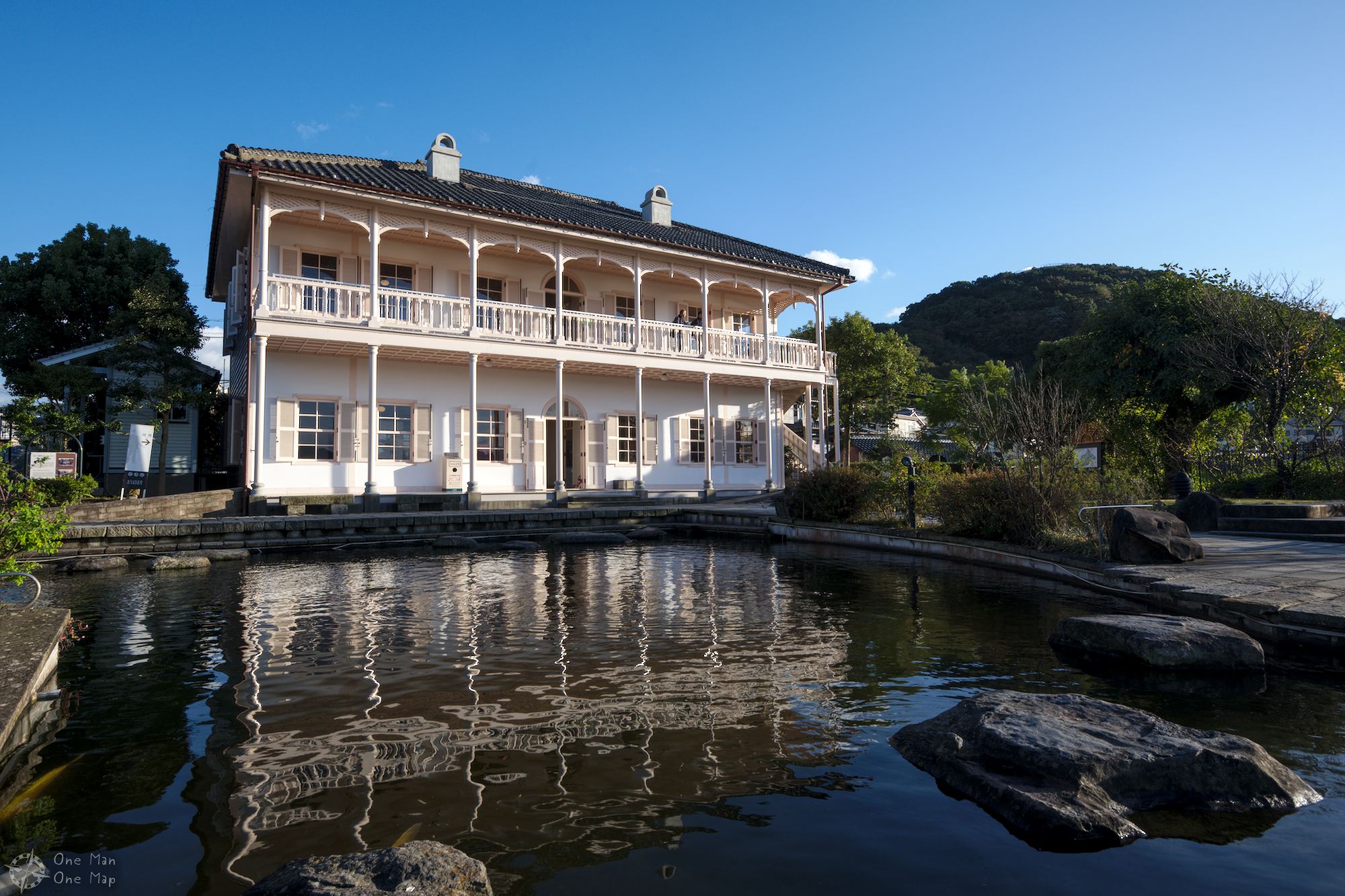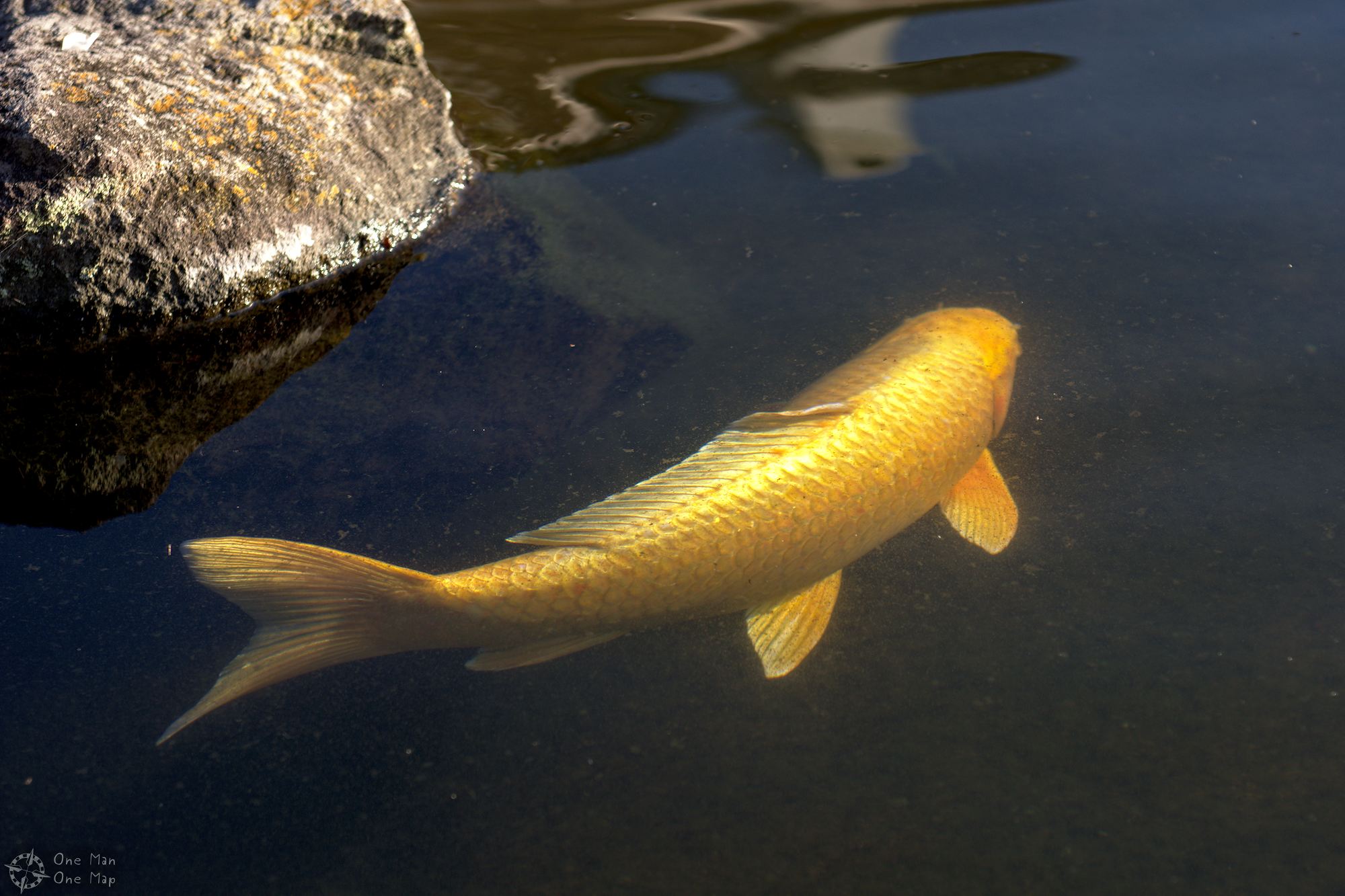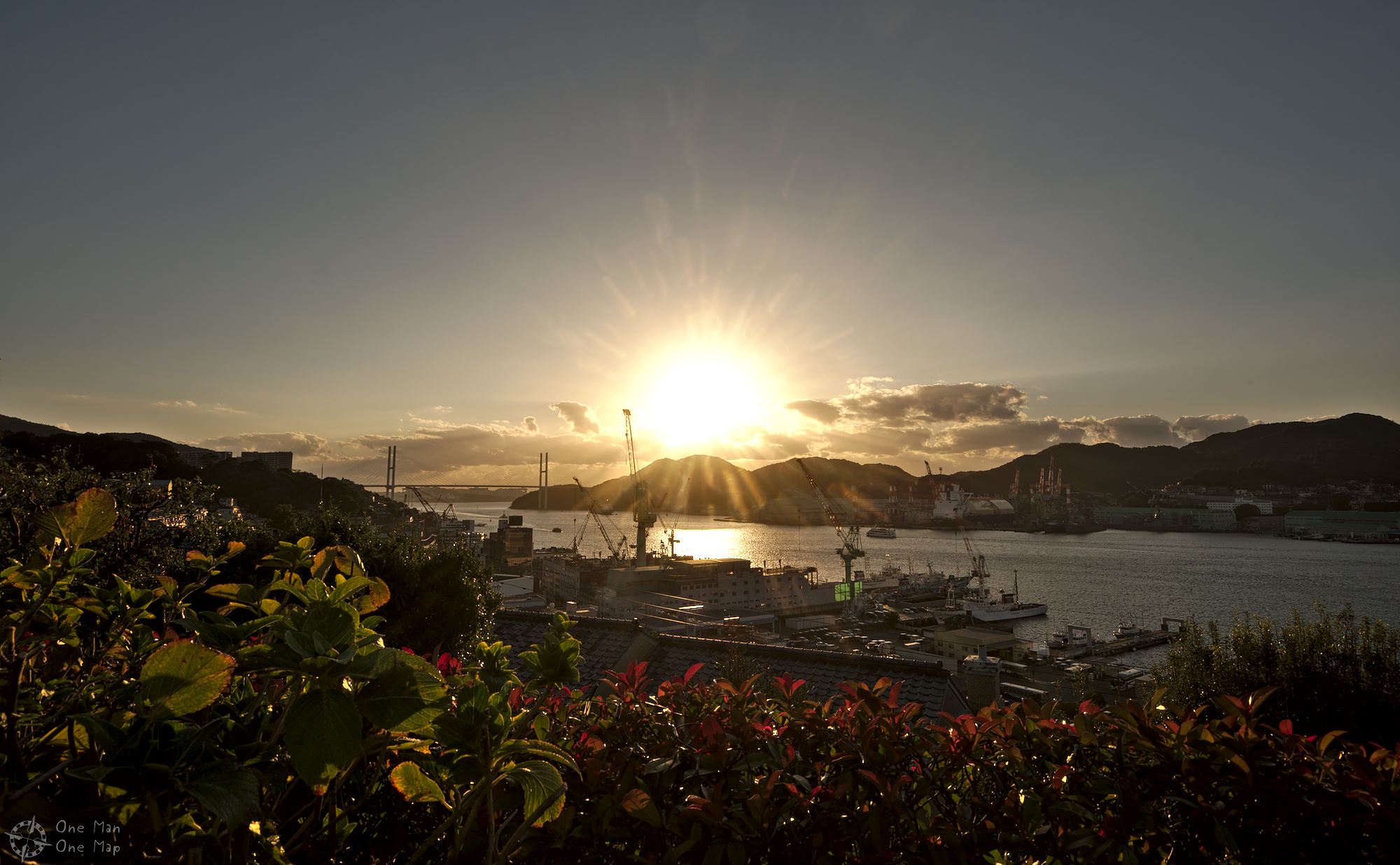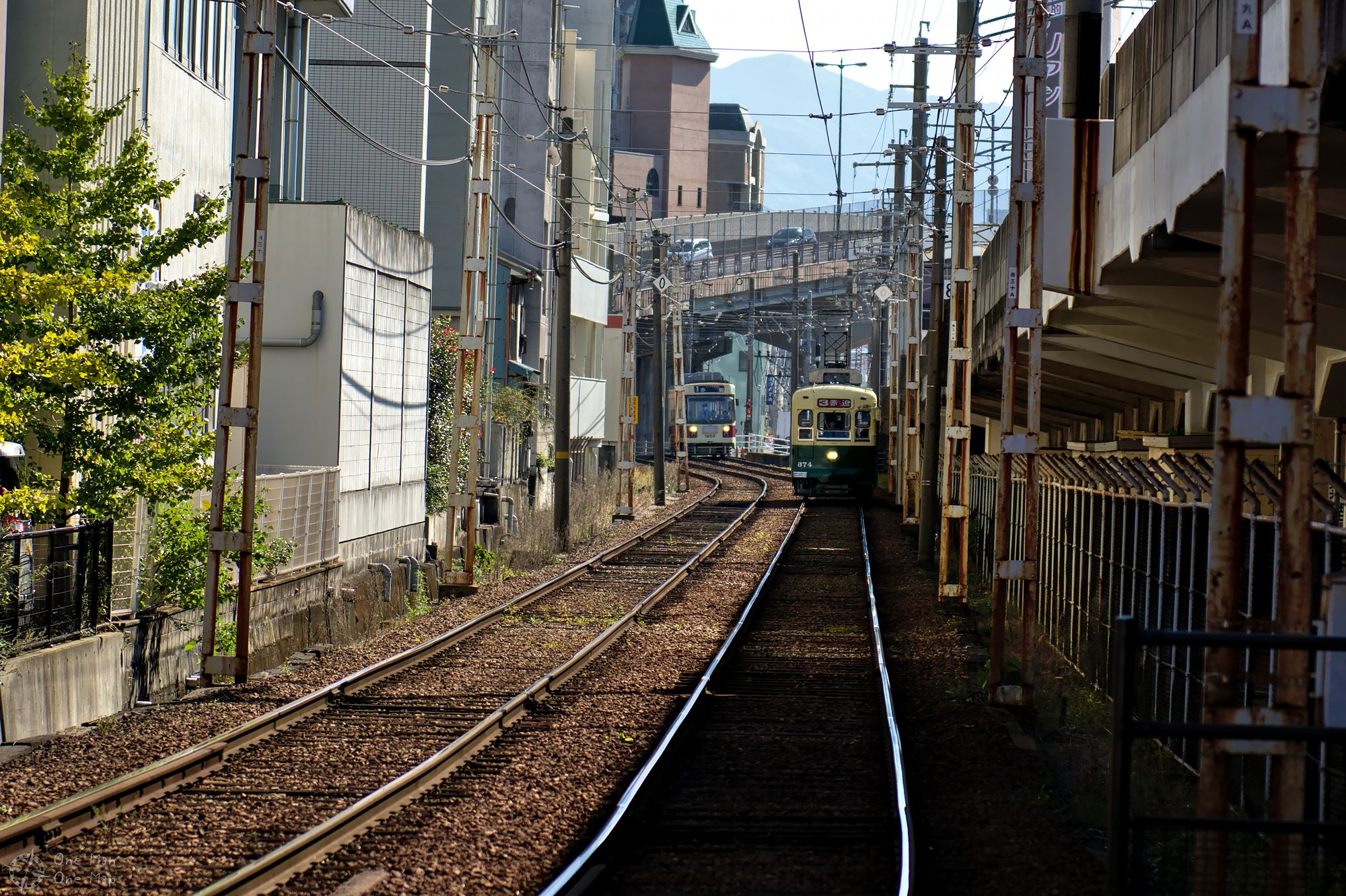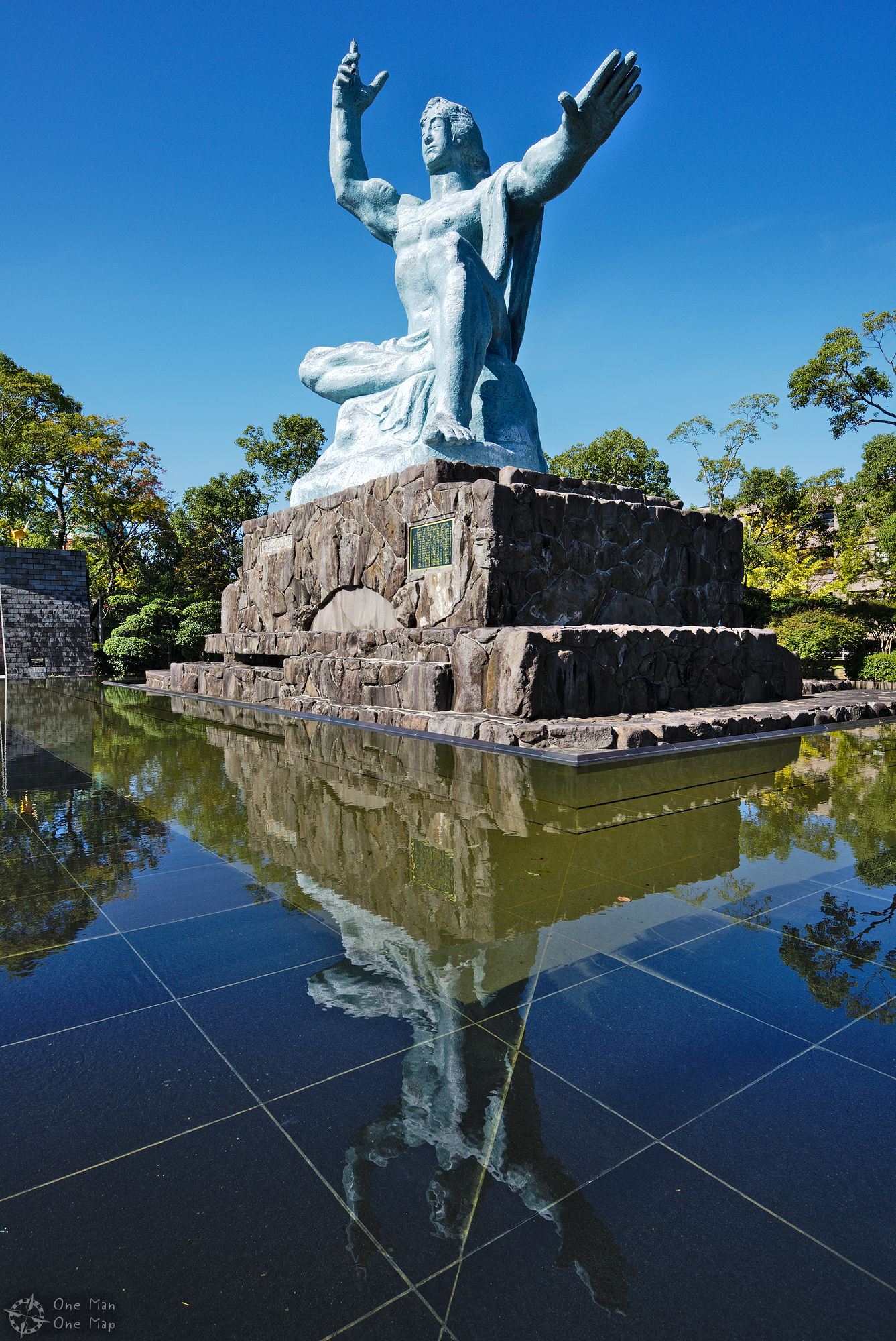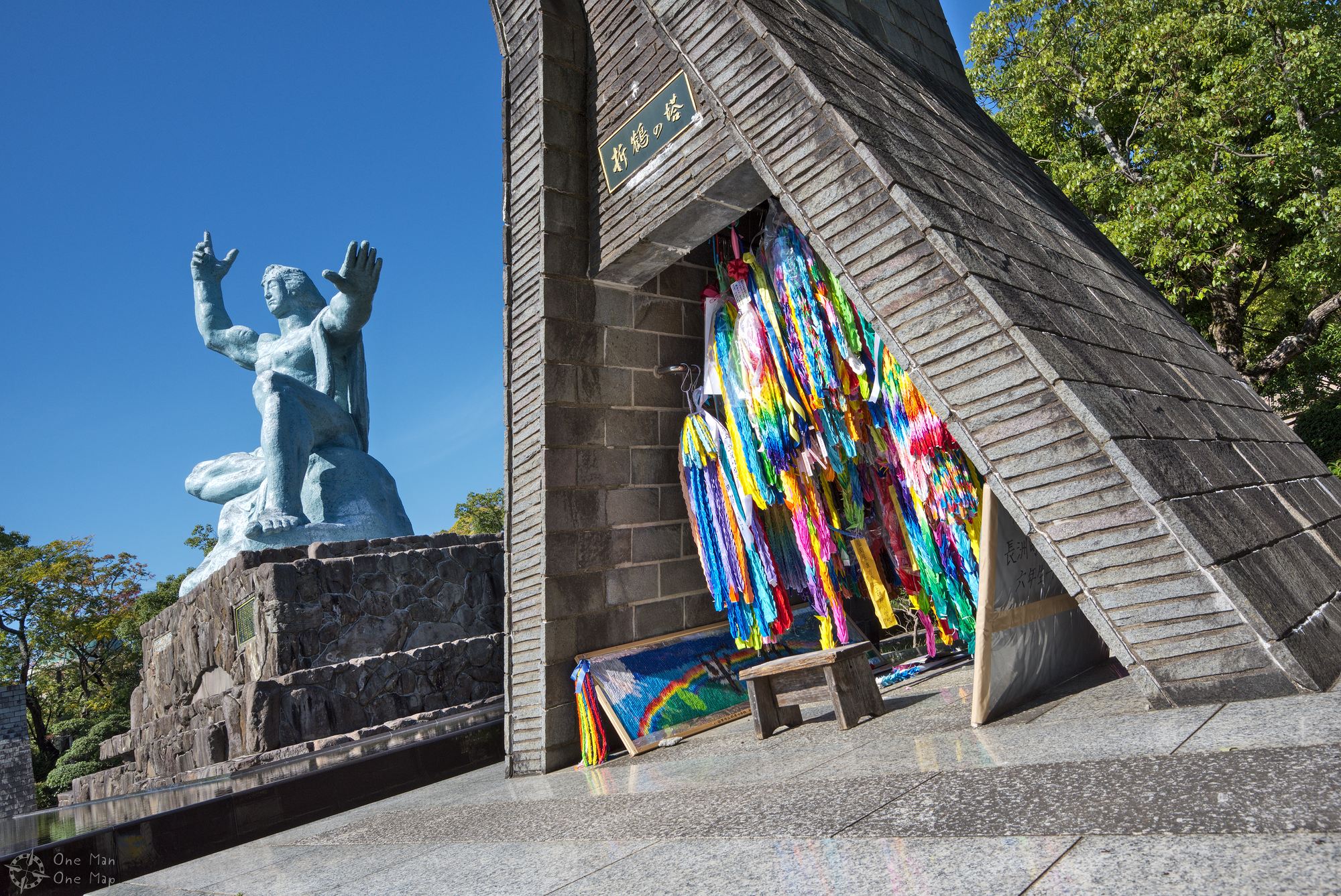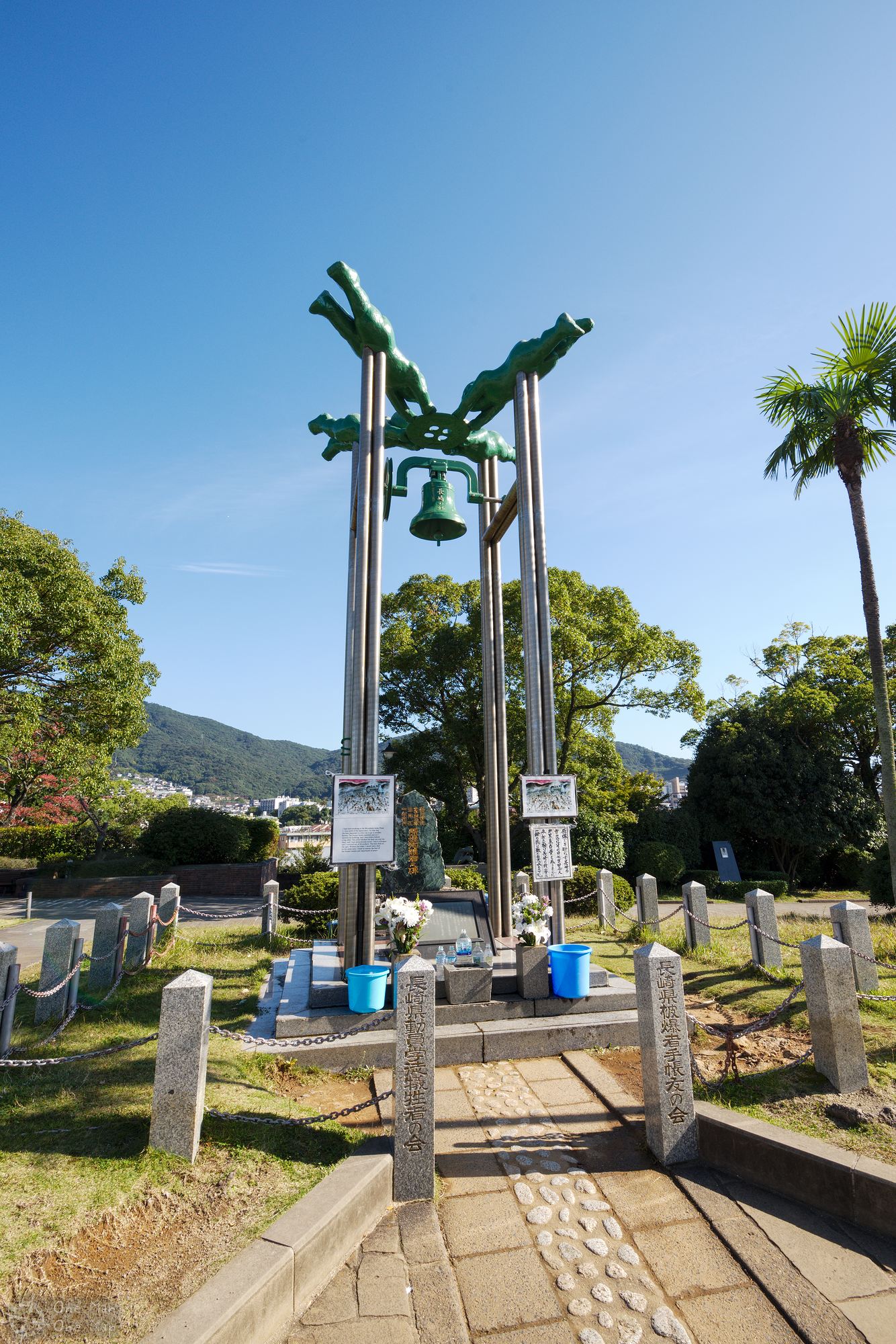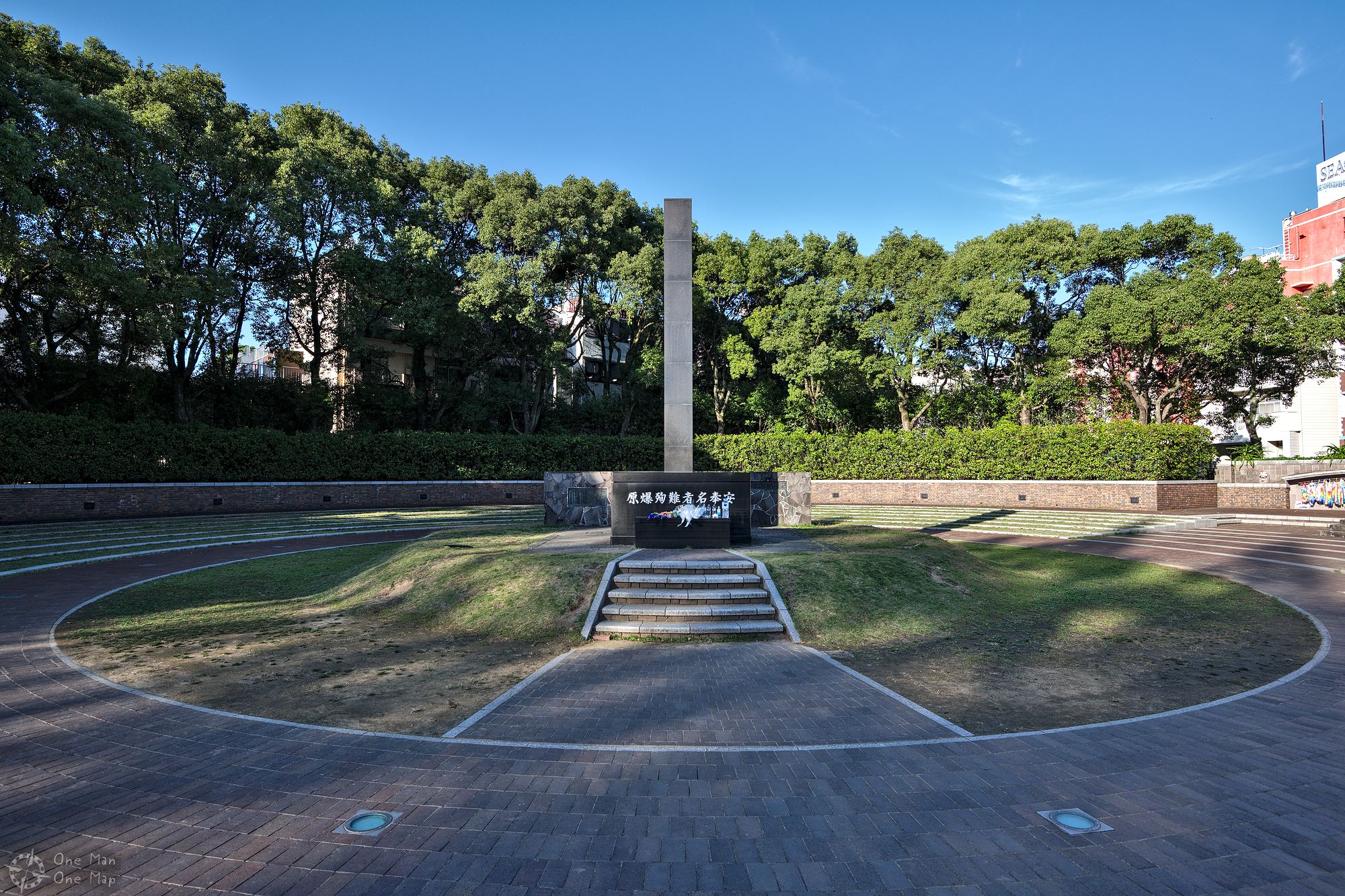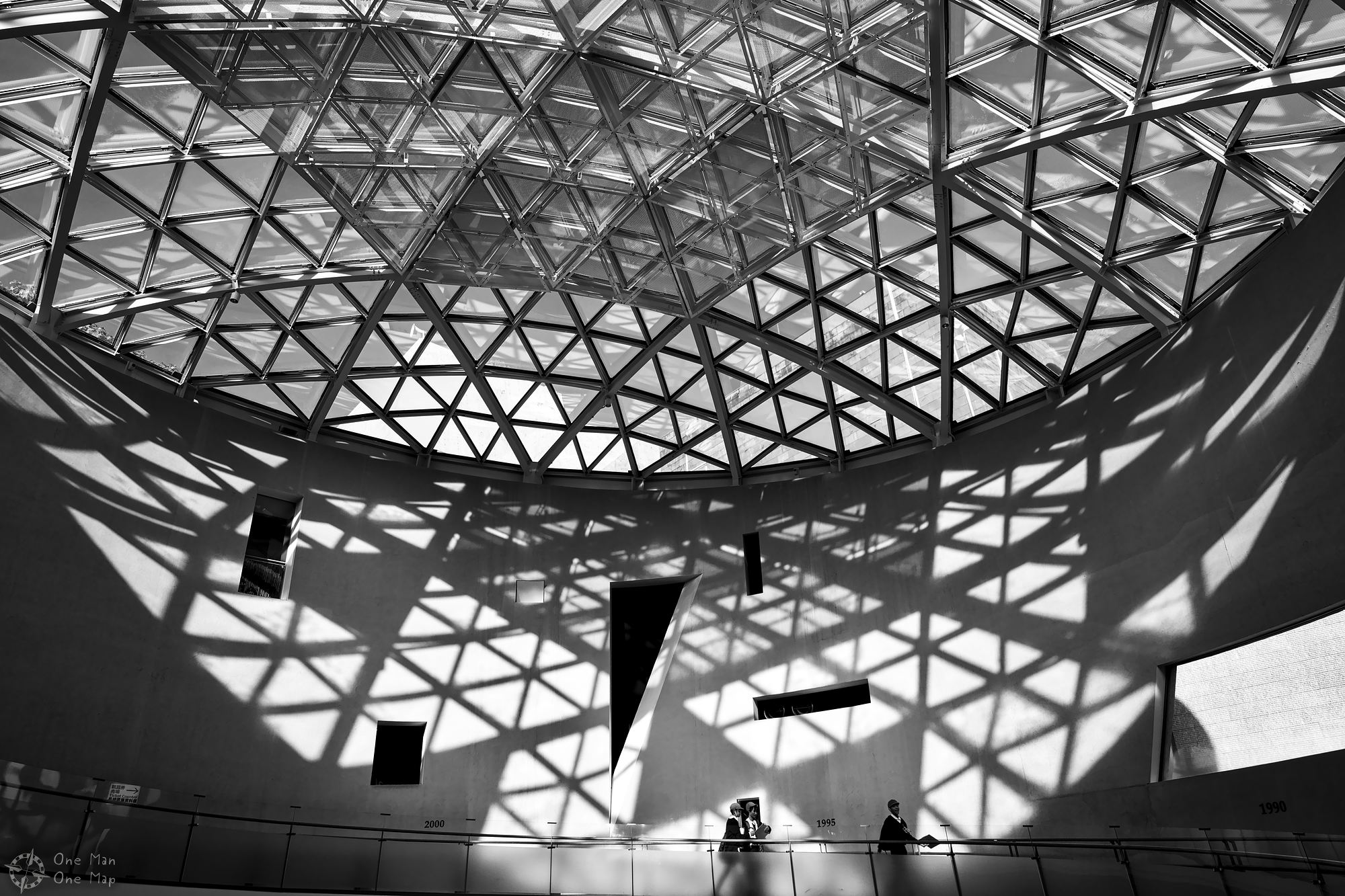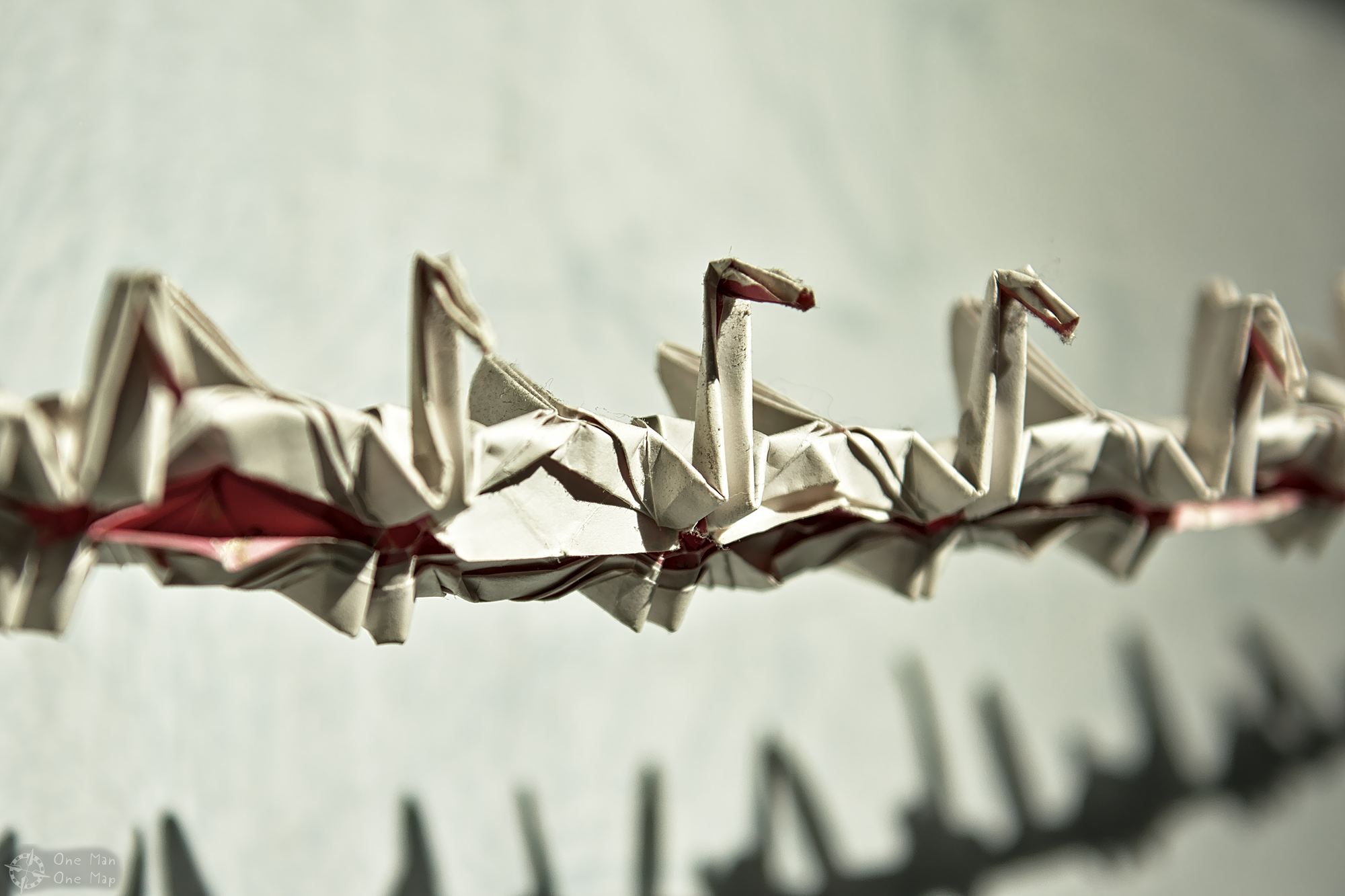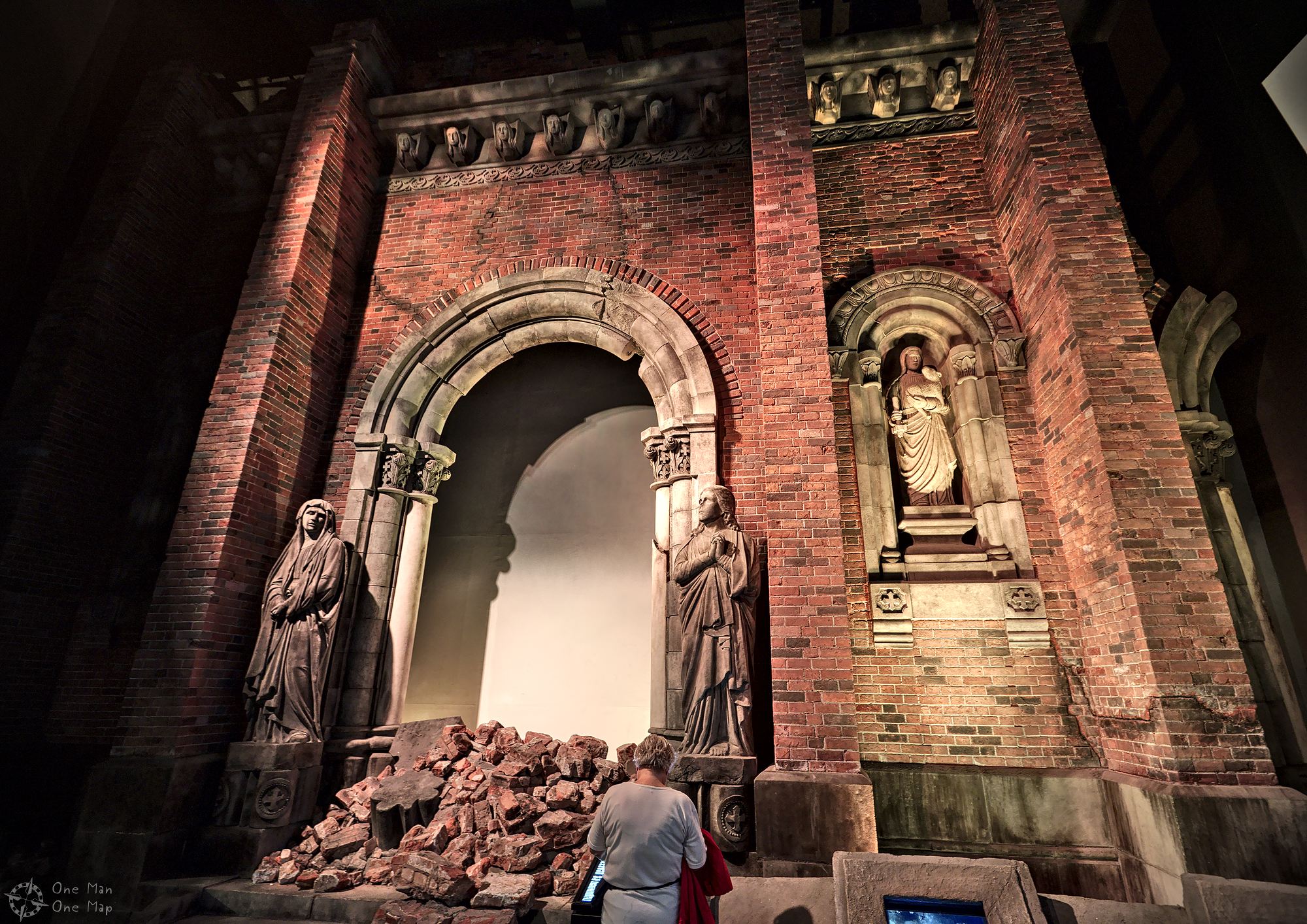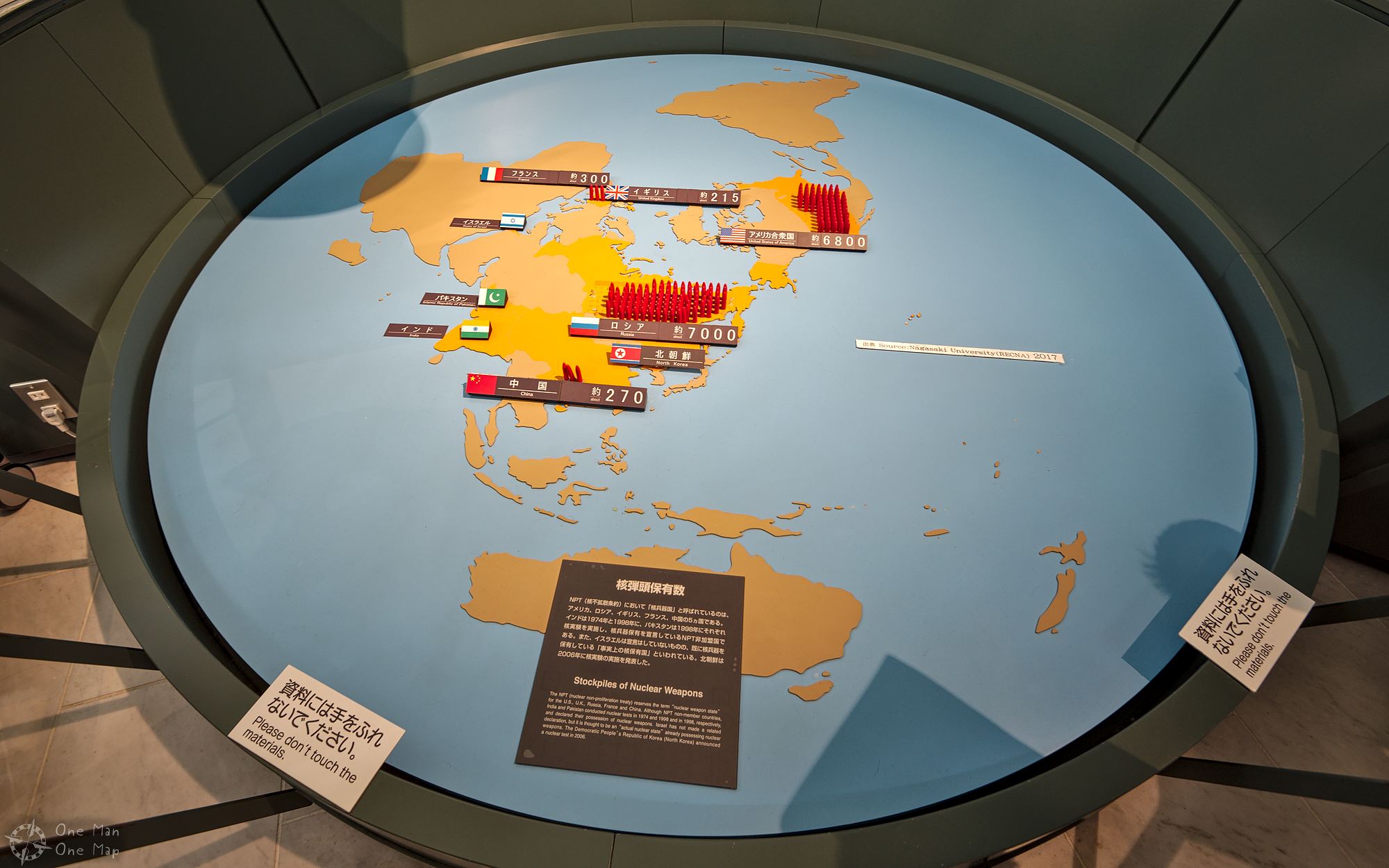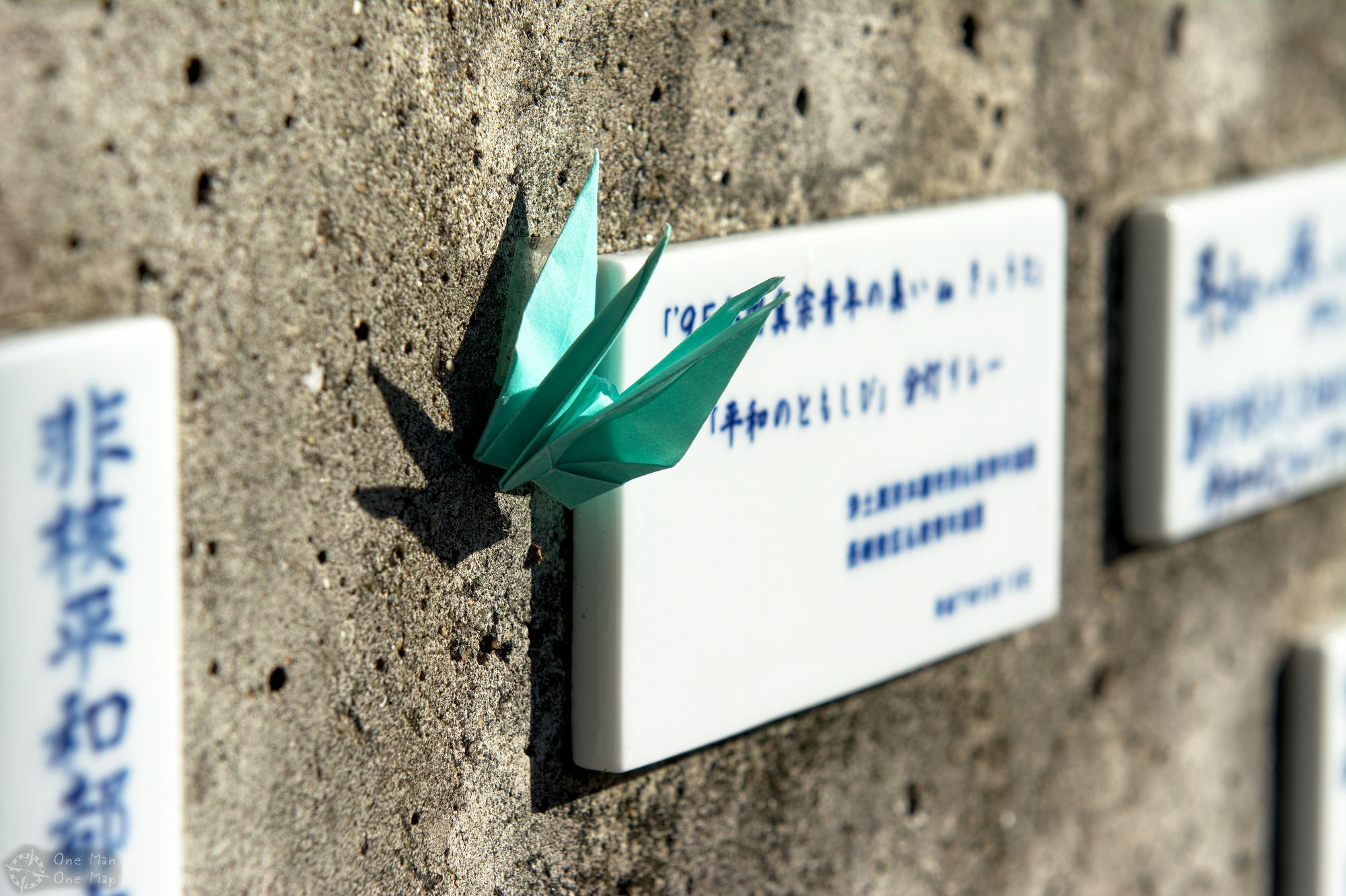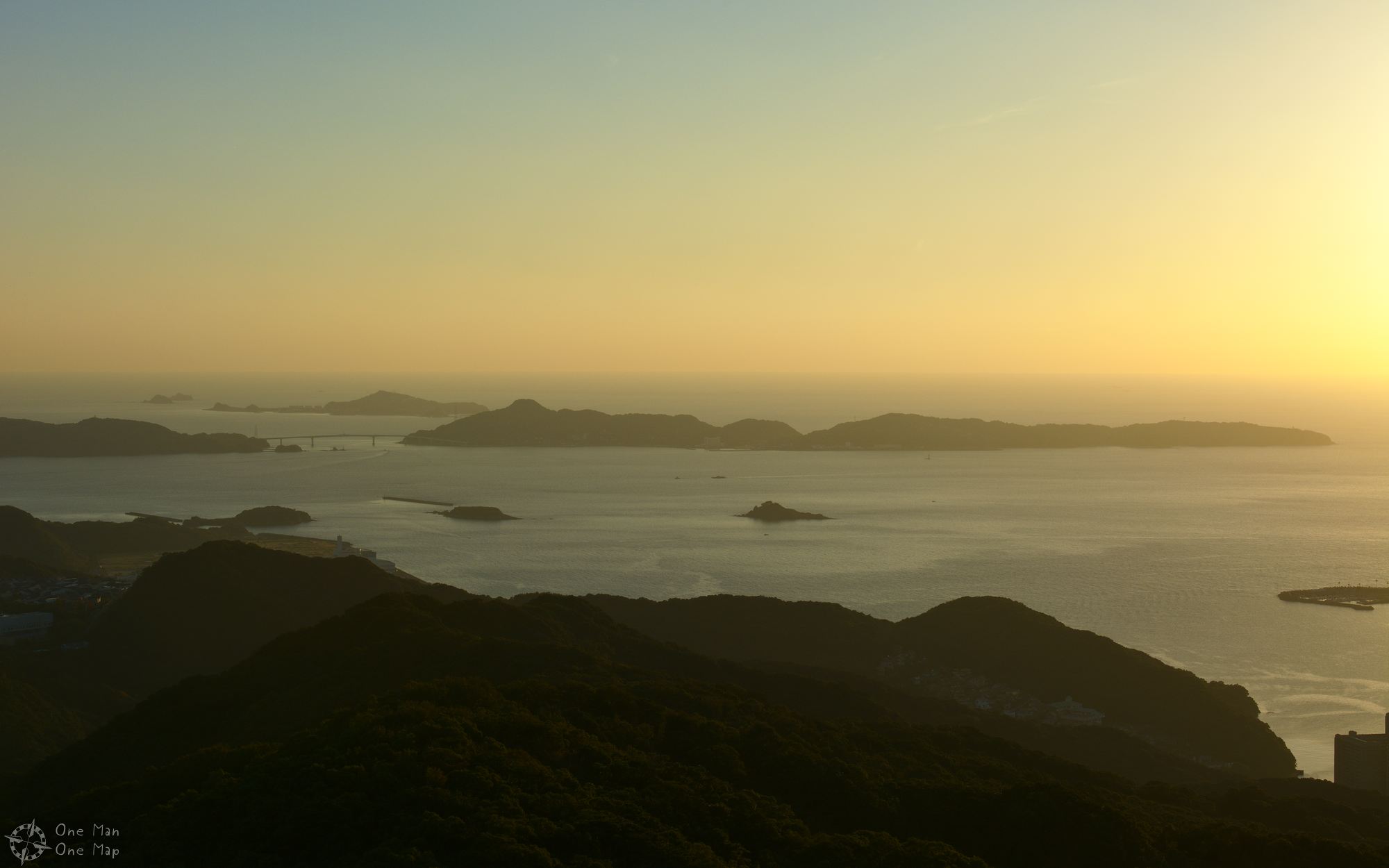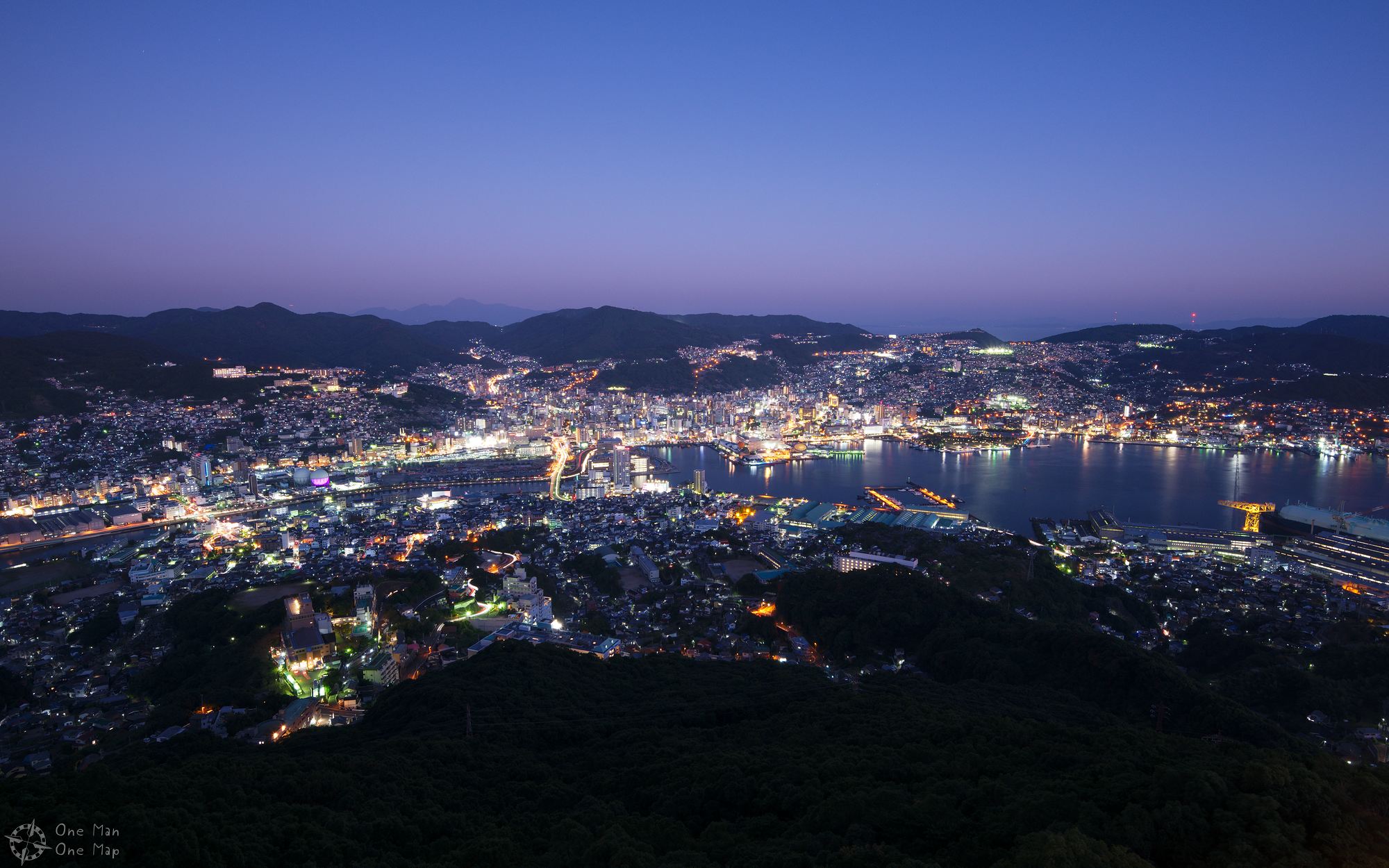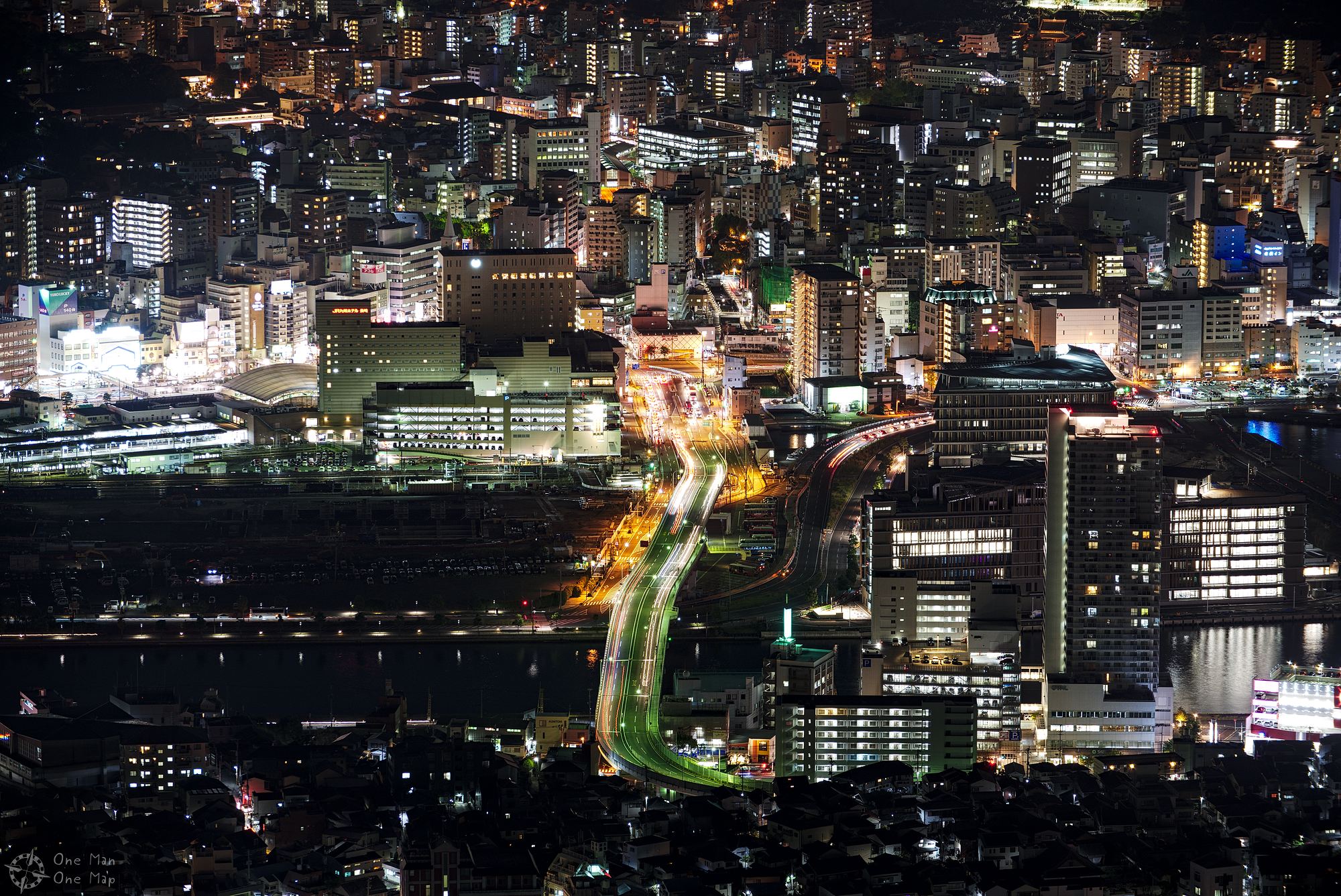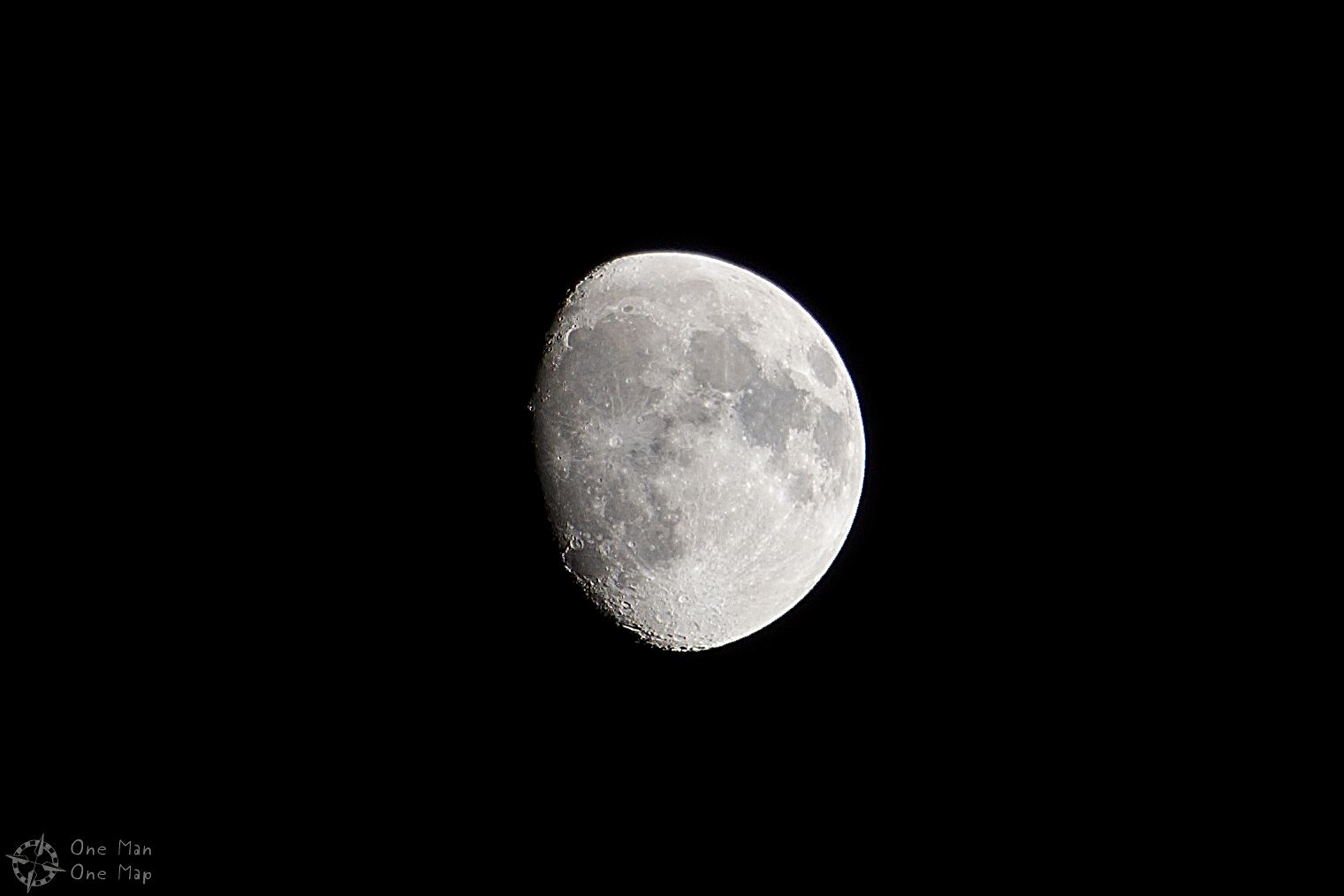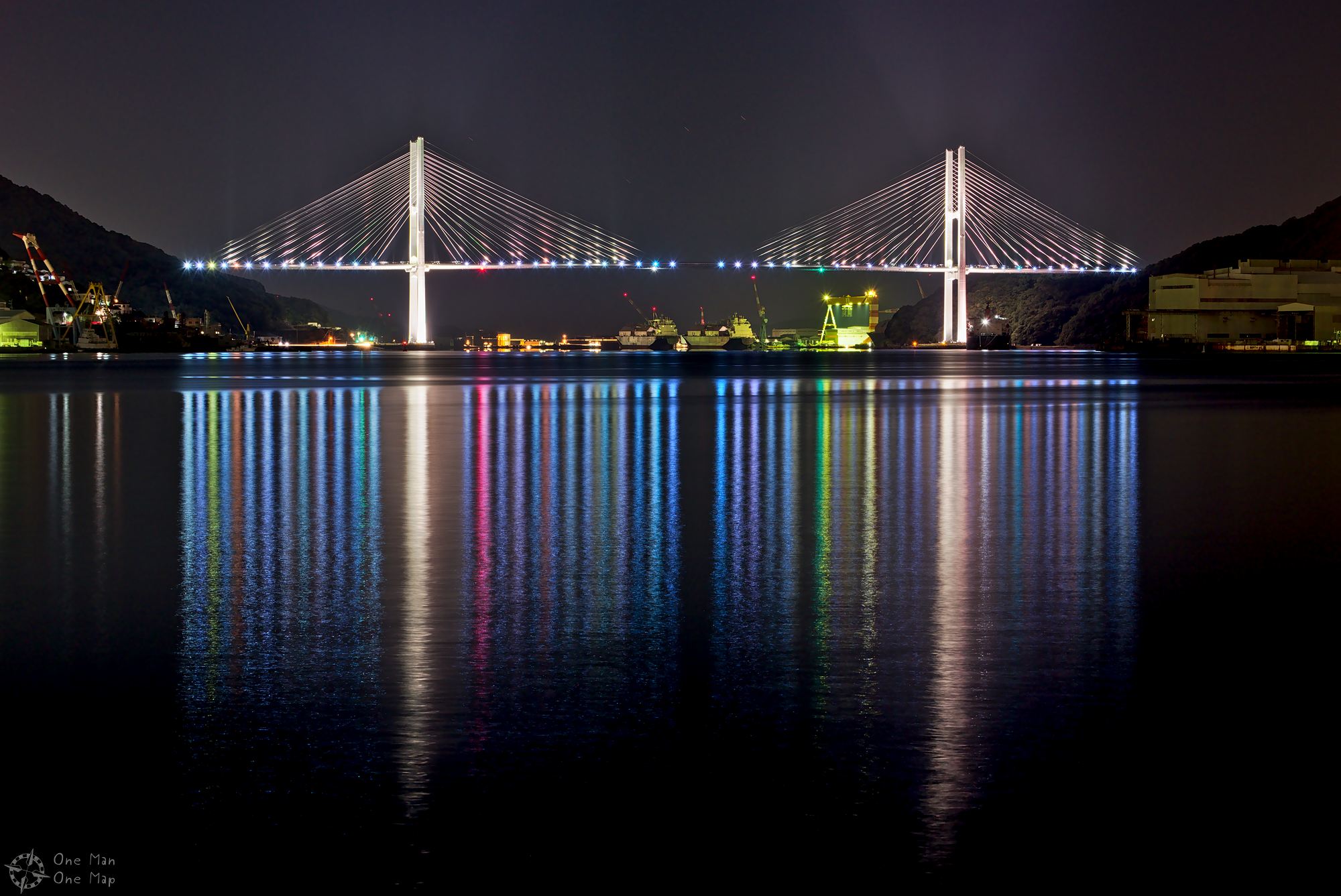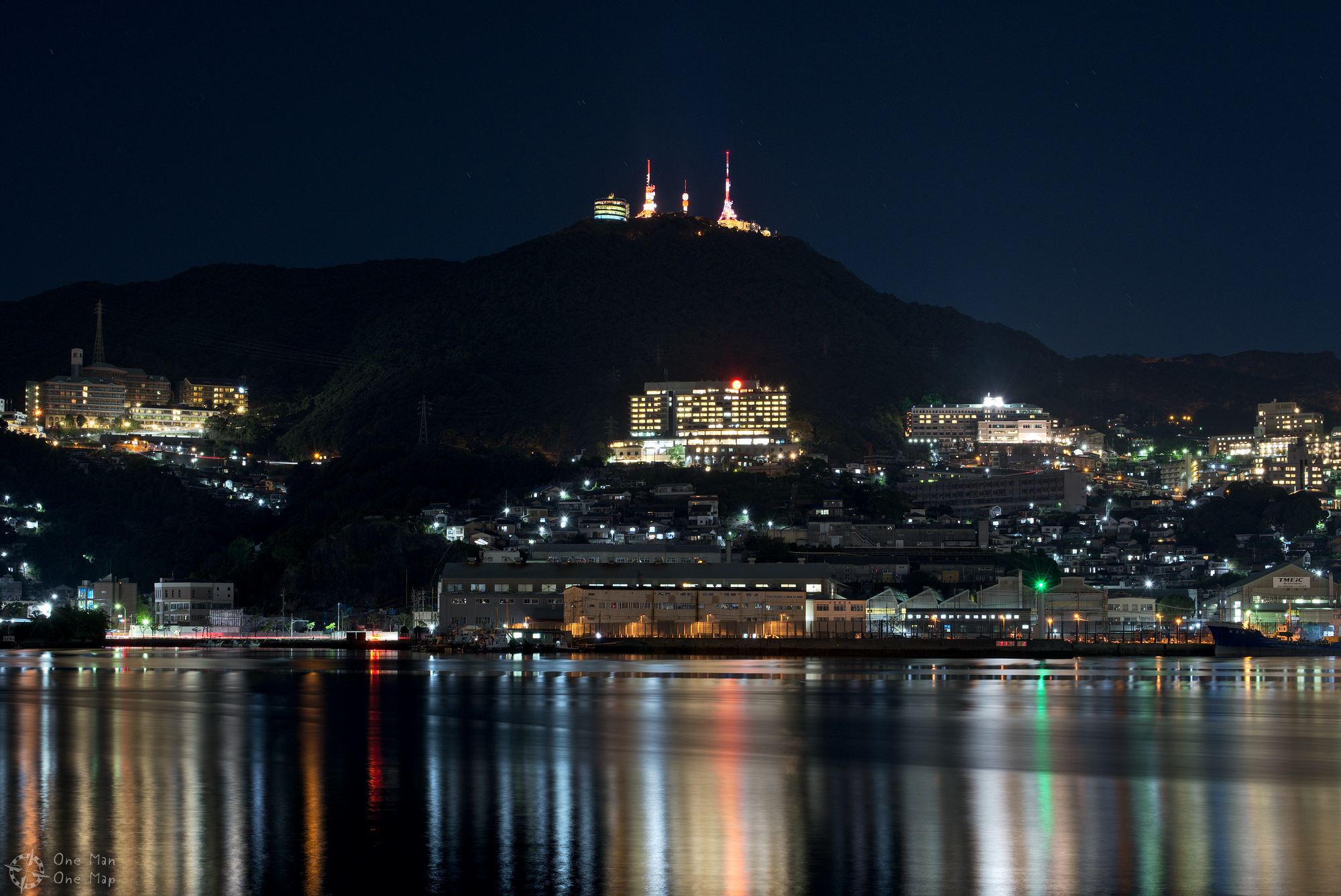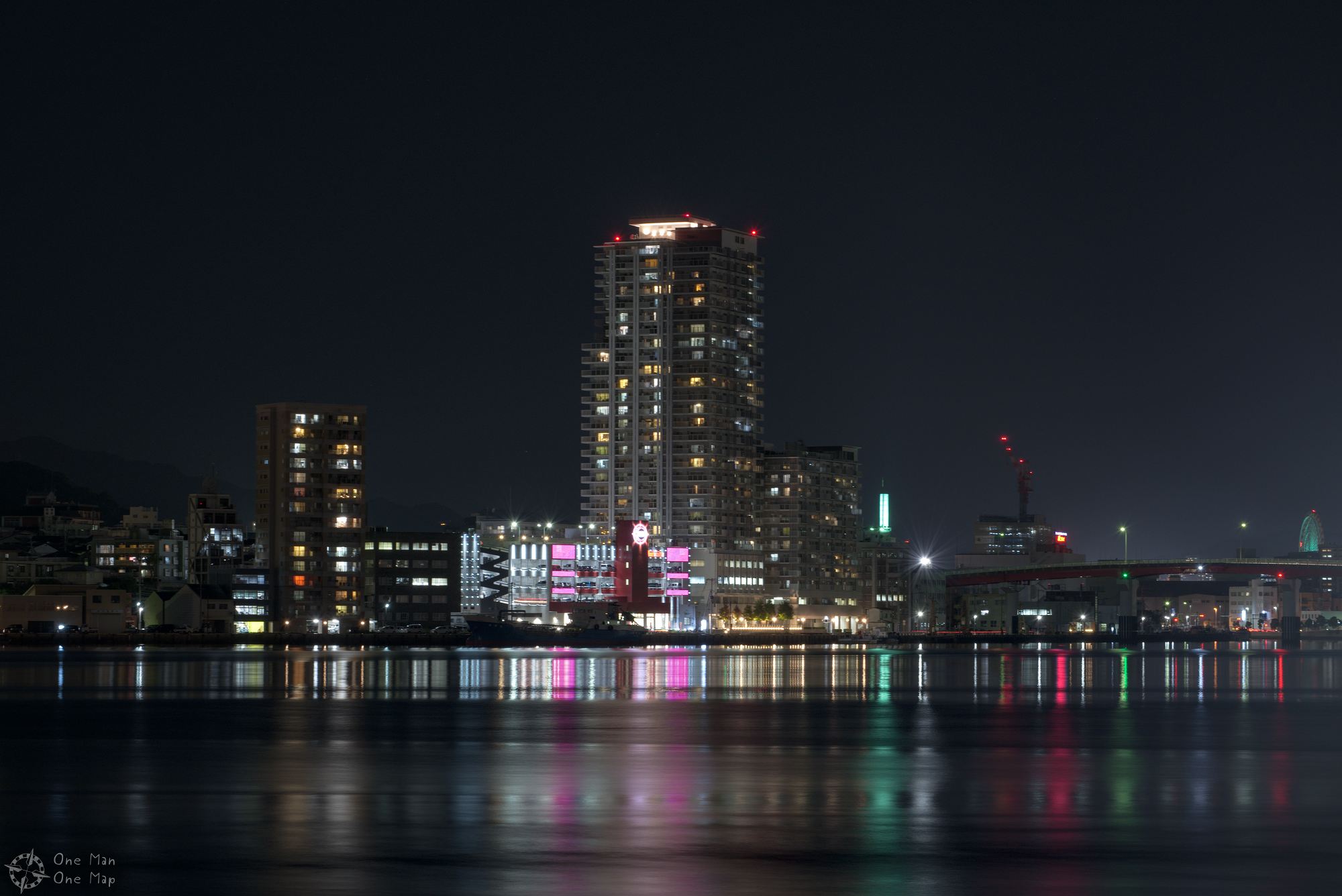Dieser Artikel ist auch auf Deutsch verfügbar. Click here to find out more about Japan!
My trip to Japan ended where probably every trip to Japan should end: in Nagasaki, “bottom left” on the map on the last corner of Kyushu, the third largest home island. Not many travelers end up here because getting there is comparably difficult – the coastal city has no connection to the Shinkansen network. If you want to go there by train, you have to plan another two hours Hakata Station (博多駅) or Shin-Tosu Station (新鳥栖駅).
Nagasaki is known almost exclusively as the target of the second military nuclear weapons operation on August 9, 1945, which forced the Japanese Empire to surrender and ended World War II. But the city has a very long and significant tradition as a trading port for foreign ships. Portuguese explorers landed in Japan for the first time in 1543 and built a network of regularly traveled shipping routes, which even resumed trade between Japan and China – both nations had ceased all direct relations due to disputes over piracy, so the Portuguese served as neutral intermediaries. Since the island of Kyushu didn’t have a suitable port for the high volume of goods, the protected bay in front of Nagasaki quickly transformed a small fishing village to a port city.
Various traditional Japanese products and foods, including bread, some types of textiles and tempura (seafood or vegetables baked in batter) go back to the contact with the Portuguese.
With its just 425,000 inhabitants Nagasaki is not a very big city, especially not for Japanese standards. The core city can easily be explored on foot, the best way to get to the more secluded attractions such as the Peace Park or the Atomic Bomb Museum is to take one of the old trams. There is also a long-distance bus station directly in front of the main station, which offers buses to the airport among other routes.
Like all other Japanese cities, Nagasaki has a coat of arms flower, in this case the hydrangea. For a change it could also be seen on the manhole covers 🙂
I decided to walk along the path marked on the map on the first day, along the sights in the inner city, and see the sights farther away (Mount Inasa, Atomic Bomb Museum, Peace Park) on the second day. I can recommend this route because at the end you pass Glover Garden and the Seaside Park and can admire the sunset over the Megami Bridge from there.
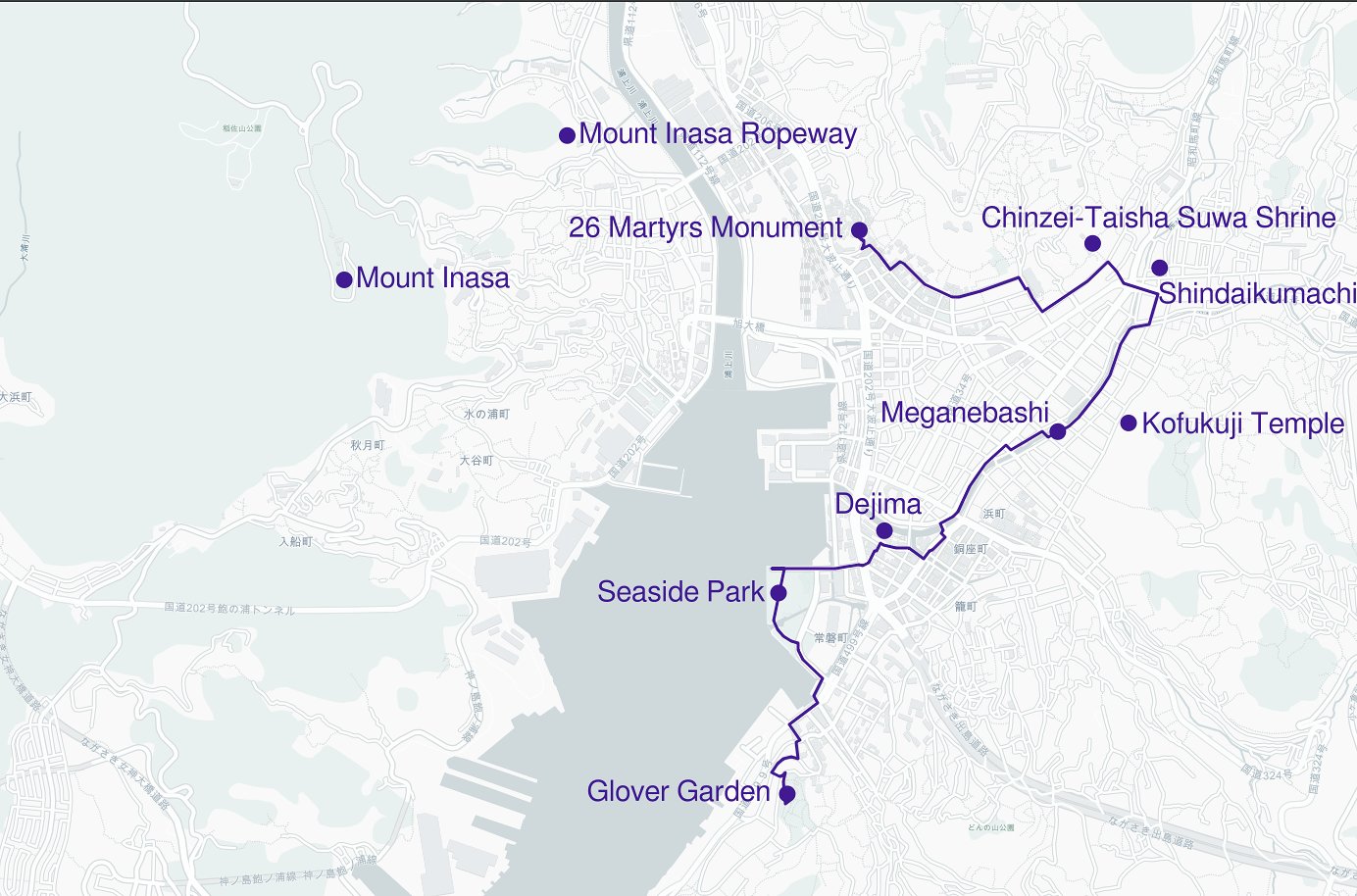
The 26 Martyrs of Nagasaki
With the Portuguese ships Christian missionaries had also come to the country, and they began to an evangelization campaign initially tolerated by the Japanese. When the country became politically unstable during the Wars of Unification, Nagasaki had eben been under the control of a Jesuit colony for a few years around 1580 AD. Then the situation worsened dramatically.
The Spaniards had occupied the Philippines while General Toyotomi Hideyoshi (豊臣 秀吉) had united Japan under his rule. When he asked how the tiny country of Spain had managed to build an empire reaching as far as East Asia, he received the following answer from a captive captain: “His Most High Catholic Majesty first sends priests to convert the people to Christianity, and these converts then help the Spanish soldiers”. A strategy which also seemed to fit the activities of the Portuguese and Christians in Japan. Toyotomi was furious and demanded the execution of his new enemies in order to set an example.
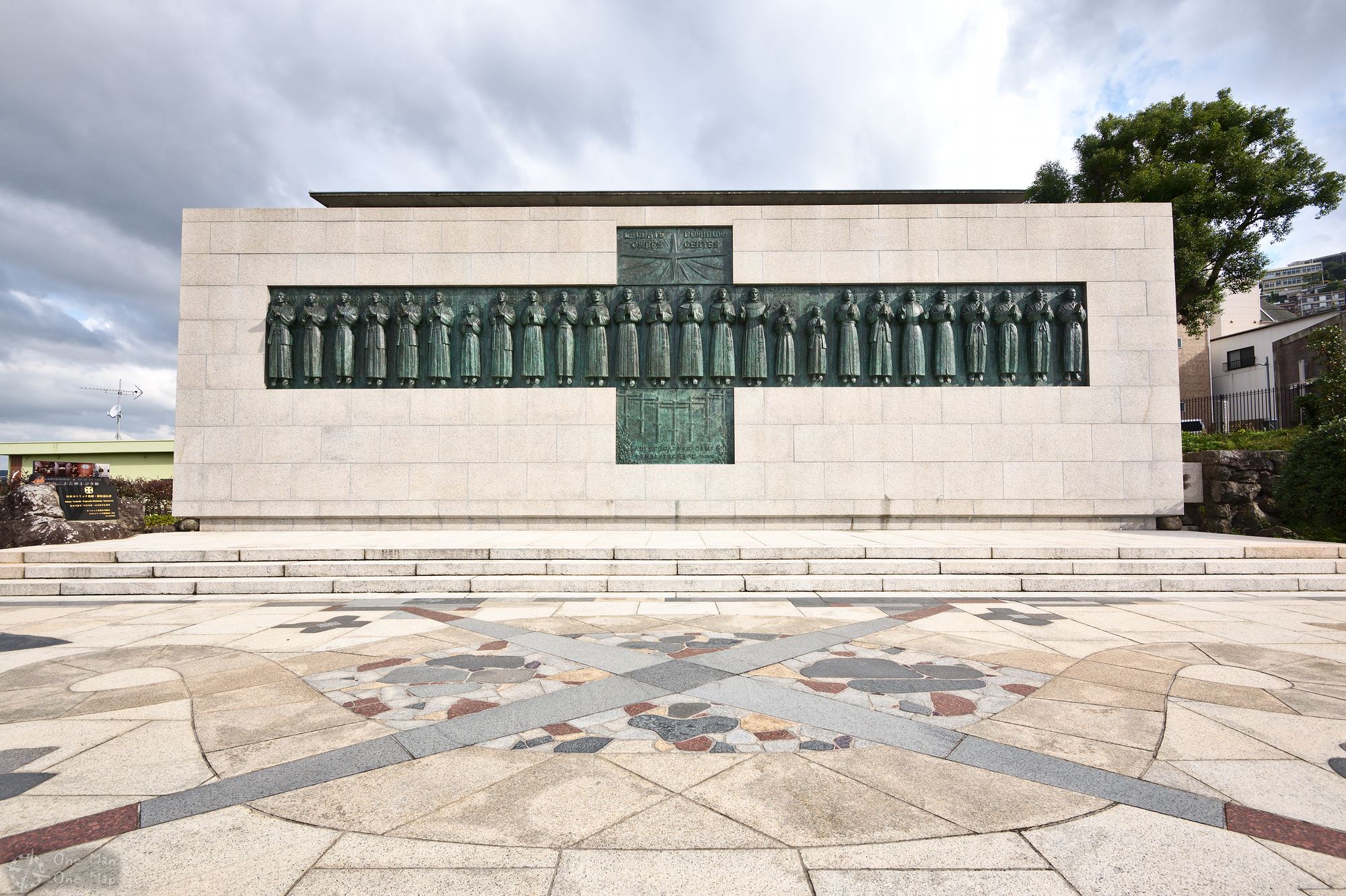
A total of 24 Christians of various nationalities, including 15 Japanese, were sentenced to death and driven from from city to city starting in Kyōto until they arrived in Nagasaki – a distance of 750 kilometers. On the way, two other Japanese Christians decided to volunteer to be murdered with their brothers.
The Japanese might not have liked Christianity back then, but had no problem reading the Bible: the death sentence was executed by crucifixion on Tateyama Hill, including stabbing the dying delinquents in the side with a lance. Today a memorial commemorates the 26 martyrs.
The Japanese Cemetery
Not far from the Martyr memorial there is a beautiful Japanese cemetery with many family graves. Almost all the deceased are cremated, so the graves usually contain only the urns. A whole pack of cats took advantage of the many hiding places and the shady spots.
Typically Japanese: The church is made of concrete. What else? At least the architect tried adding a “Hundertwasser” imitation …
Parking in Japan: Free space is scarce in Nagasaki too, so it must be reused as often as possible. Hadn’t already I seen this elevator solution in Seoul?
The big surprise: In contrast to Hiroshima many buildings had survived the atomic bombing completely unscathed! The bomb had been dropped off three kilometers too far north because of bad visibility, so the heat and shock waves had only spread along the Urakami Valley on the coastside. If the sky over Nagasaki hadn’t been so cloudy on 9 August 1945, I would not have been able to take many of the following pictures.
The Chinzei-Taisha Suwa Shrine (鎮西大社諏訪神社)
The suppression of the Christian faith had not been over with the crucifixion of the 26 martyrs of Nagasaki, but was pushed to further extremes in the following years. More than 750,000 Japanese people had already converted to Christianity back then, and in stark contrast to the rest of the population they had become increasingly opposed to their secular rulers. Christianity had turned into a problem, so Shogun Tougawa Ieyasu (徳川 家康) finally banned the whole religion in 1614. All foreigners and Christians were expelled from the country, if necessary by the military. At the same time Shintoism and Buddhism, whose followers generally did not revolt against the authorities, were promoted.
The successively built Chinzei Taisha Suwa Shrine is an excellent example of the basic architecture of many Shinto shrines. As usual, one enters through a large (concrete) Torii, but there are many more wooden Torii painted in red inside the shrine. These have been donated (the names of the donors are painted in black color) and set up along a shady path. Such “Torii tunnels” exist in many places in Japan, sometimes with hundreds or even more than a thousand Torii.
The Suwa Shrine is especially known for its two lion statues. People who want to put off a negative behavior, like smoking, bind a thread around their front legs and ask for support. There seemed to have been many smokers left in Nagasaki …;)
Phew, finally a prophecy which sounded better than the one I had gotten in Tokyo before… but still so-so. Better not go on a trip? Hmph.
The Torii also extend outside the shrine, deep into the neighbouring Shindaikumachi district (新大工町) – a rather unusual, but nonetheless impressive arrangement.
Kofukuji Temple (興福寺)
Nagasaki is only about 800 kilometers by sea from Shanghai, so it’s no wonder Chinese influences quickly found their way to Japan. Although the complex is a Buddhist temple, it is dedicated to the Chinese sea goddess and “queen of heaven” Mazu (媽祖).
Quite impressive what the master builders were able to pull off almost 400 years ago 🙂
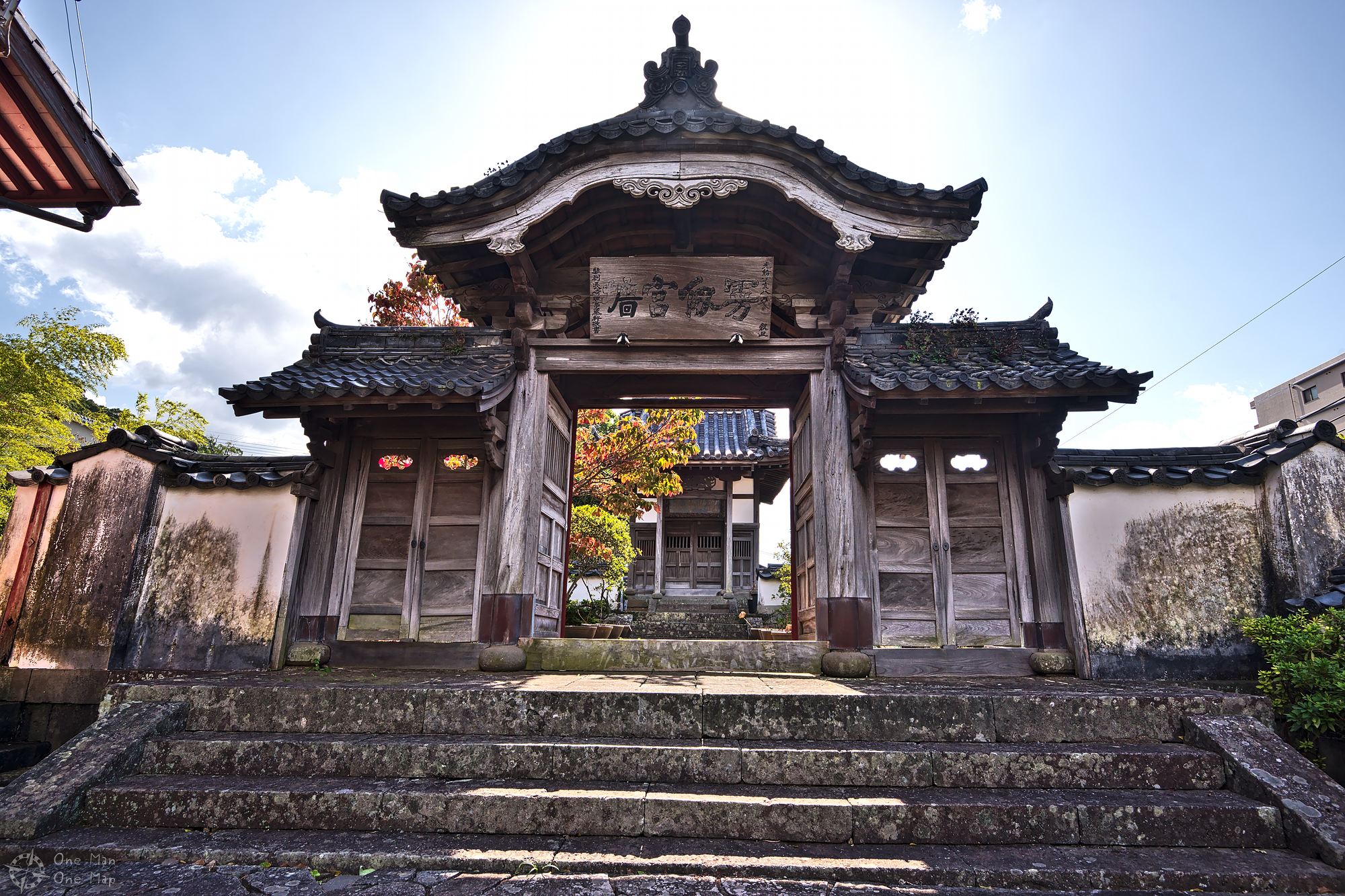
Along Nakashima River (中島川)
This ugly fellow here is Tanuki, a raccoon with supernatural powers. He has many responsibilities, but seems to be most often placed as a lucky charm in front of shops and restaurants. The oversized testicles are not a production fault, but an integral part of the whole figure. Depending on the portrayal, Tanuki sometimes even hangs them over his shoulder, and the well-known Japanese rhyme “Tan-Tan-Tanuki’s / Testicles / Even Without Wind / They Swiiing-Swing!!” makes schoolchildren laugh all over the country.
The Nakashima River runs through the inner city and divides it into two halves. Between Shindaikumachi and the river mouth about two kilometers further down there are 19 bridges alone. Only one of them is usually mentioned in the guidebooks, the Meganebashi, but the others were nice to look at as well.
The main attraction for all Instagram influencers: The Meganebashi (眼鏡橋, Spectacles Bridge). Seen from the right angle, the two bows and their reflections in the water look like a pair of glasses.
Opps? Don’t we know this guy from somewhere?!? Right, that’s me 🙂 While I was taking a long exposure shot of Meganebashi, I was suddenly approached by a nice lady with a video camera in her hand. She was taking small interview sequences with tourists on behalf of local station NBC Nagasaki (NBC長崎放送) for their show “Gena pane!” (げなパネ!, Big Panel). My camera equipment seemed to be of great interest to her.
We talked for a bit in bumpy Japanese and English, and she ended up following me for the next four hours on my way through Nagasaki. We stayed in contact for the next few weeks so she could incorporate my photos into the five-minute sequence. The broadcast was finally aired on November 29, 2017.
Dejima
The prohibition of Christianity and other incidents with foreign powers finally lead to the complete isolation of Japan in the mid-17th century, for a period of about 220 years. Only Chinese merchants, members of the Dutch East India Company (the Protestant Dutch did not proselytize) and emissaries from the Kingdom of Korea were allowed to enter Japanese soil, but even the Chinese were confined to their own quarter for the duration of their stay.
Contact to the rest of the world was extremely limited, for example to Dejima, a small, artificially created island in Nagasaki. A small group of Dutchmen were allowed to live there, but could only leave the island on very few occasions during the year and dispatching a limited number of foreign ships. Officially, the whole country was sealed off the whole time, but books, medicines, globes, maps and paintings came into the country as unsanctioned Dutch “rarities”, or the Japanese servants and interpreters looked over the shoulders of their Dutch guests and passed on what they had learned. The occupation with the West was therefore referred to in Japan as “Dutch learning” (蘭学, Rangaku).
Today, Dejima is located within the city due to further land reclamation, and the historic buildings form an open-air museum. The entrance fee is only 300 Yen (about 2 Euros) and worth it, because the Portuguese residents had a lot of time in their hands which they spent on interior design, for example 😉
Glover Garden (8グラバー園)
With a total of four cameras in tow we made our way to the Glover Garden, the former residence of Scottish businessman Thomas Blake Glover.
The isolation of Japan had been violently broken in 1853 by the United States of America. In the following years, the Japanese suddenly came into contact with technologies which were completely new to them, such as modern ships and steam engines. The foreign invaders also seized special rights, however, including the establishment of extraterritorial areas, and Japan was not allowed to freely trade technical equipment or – above all – modern weapons. Although the country was now able to upgrade technologically, it had also become the defenseless slave of its new masters.
Thomas Blake Glover came to the country in 1859 as a tea merchant, but ended up settling there. In 1863 he had a large residence and garden built on a hill. Glover built a coal mine and made major contribution to the country’s industrialization, for example by bringing a small railroad to Japan. Years later he even supplied the Japanese rebels with weapons and warships, thus supporting the restoration of the sovereign empire.
Why he felt so attached to the Japanese is not entirely known, but he was awarded the Order of the Rising Sun by the government, and his estate is still maintained as Glover Garden today.
As a TV star you also have to offer something special, of course. We decided to film myself while taking a picture of the sunset as seen from Glover Garden, but nature is unpredictable … after 30 minutes in the cold wind and pulling all tricks out of my sleeve all I could get was the following picture 🙁
Nagasaki Peace Park (平和公園)
On the second day I went for the sights farther outside of the city. This included the Peace Park, which is located seven tram stops north of the main station.
The park is smaller than the one in Hiroshima, but was also much less crowded. The acting mayor of the city reads out the Peace Declaration in front of the nine-meter-high statue of peace every year on August 9, the anniversary of the dropping of the atomic bomb.
As in Hiroshima, countless Origami cranes could be found on all the monuments.
A sculpture park had been opened on both sides of the park in 1978. Since its opening, 17 foreign countries have donated one sculpture each. Three of these countries no longer exist today: the Soviet Union, the GDR and Czechoslovakia. The sculpture donated by the GDR was even inaugurated by Erich Honecker himself in 1981.
On the way to the A-Bomb Museum you pass a small monument which marks the hypocenter of the explosion.
The A-Bomb Museum (長崎原爆資料館)
Since 1996, Nagasaki also has an atomic bomb museum. It is located just a few hundred meters from the Peace Park and a few meters underground. The descent was built in the form of a staircase which winds down inside of a large circular shaft. Along the wall there was a seemingly endless string of paper cranes.
Personally, I think the Atomic Bomb Museum in Nagasaki was more impressive than the one in Hiroshima because it not only works with images and artifacts behind glass, but also has some huge replicas of buildings immediately after the explosion on display. But the museum in Nagasaki was also built 40 years after the one in Hiroshima, so the designers had much more experience.
This map was a very useful reminder that all nuclear weapons in the world are concentrated in the hands of countries in the northern hemisphere, and these countries are all not that far apart geographically. So if you travel towards the South Pole, the world becomes increasingly secure.
On the top of Mount Inasa
The area around Nagasaki is very hilly. If you take the cable car or the bus to the peak of Mount Inasa at 333 meters, you can climb up a few additional meters onto an observation deck and enjoy the great view. Somewhere beyond the horizon lie Taiwan and China. Of course the sunset on the second day was much more beautiful, and of course there was no camera crew around anymore this time…
Even after dark, Nagasaki is quite a view…
… as was the sky that day 🙂
Seaside Park (長崎水辺の森公園)
I spent my last hours in Japan down at the shore again, in Seaside Park. The park itself felt very artificial and not quite on the same level as other Japanese parks, but from here one has a very good view on Megami Bridge, Mount Inasa and parts of the city center.
Sayonara, Japan – we’ll definitely meet again someday! 🙂
This post was written by Simon for One Man, One Map. The original can be found here. All rights reserved.

